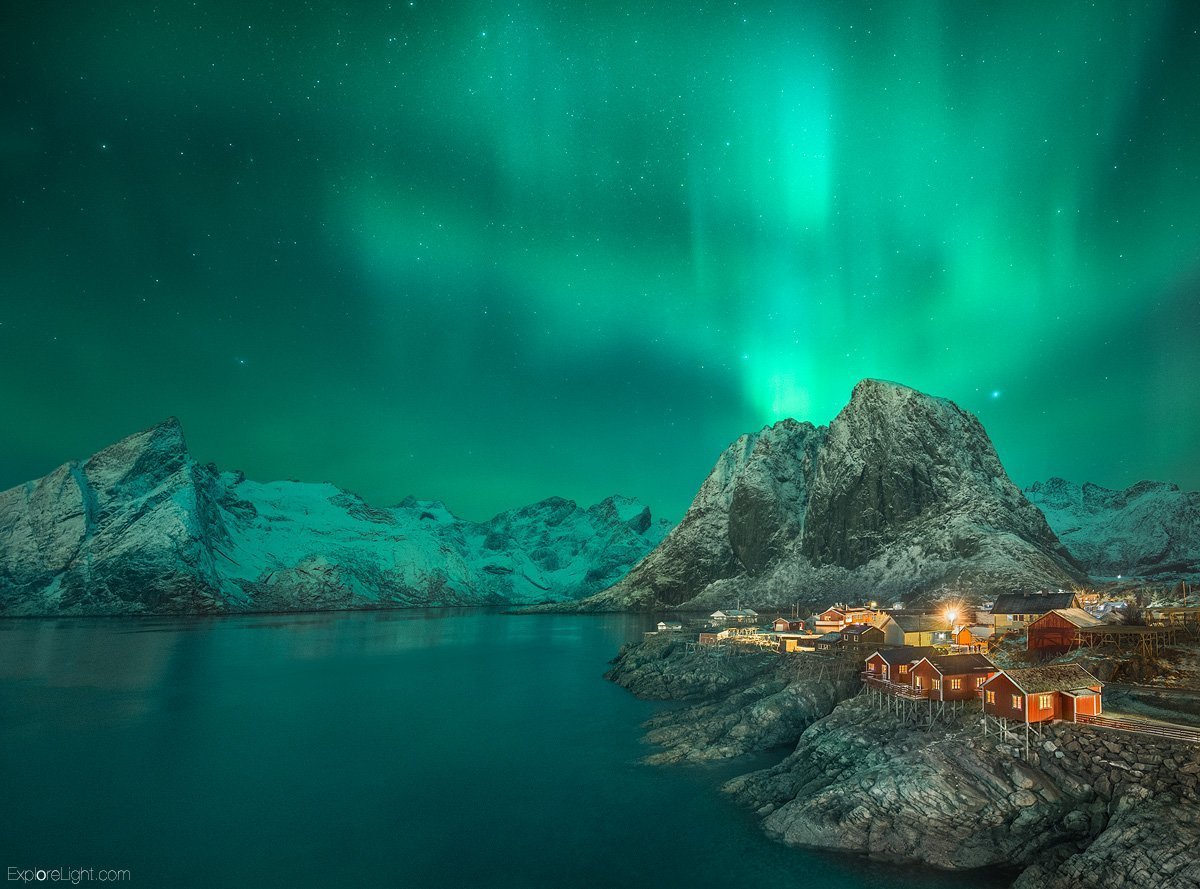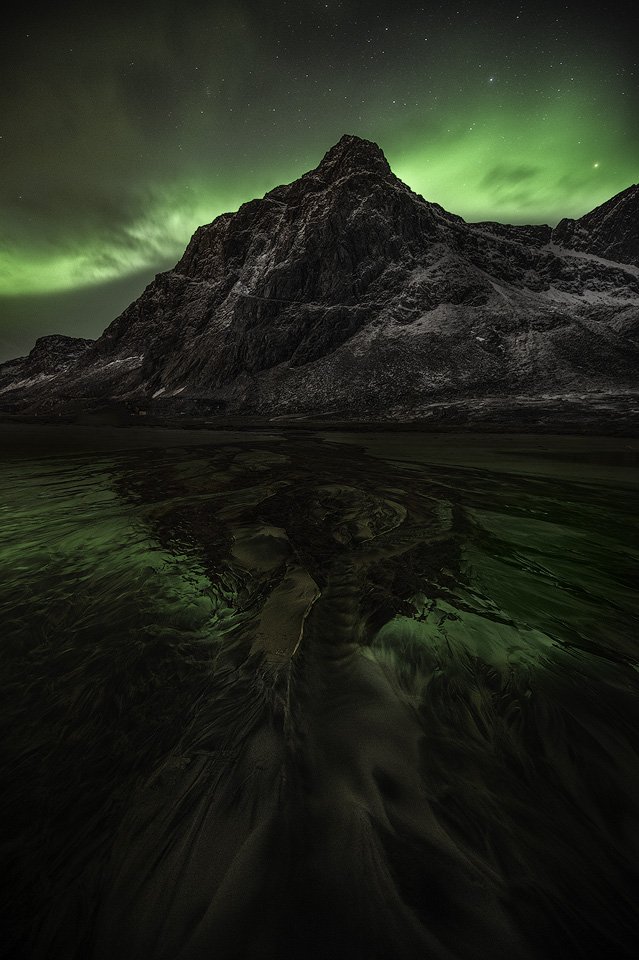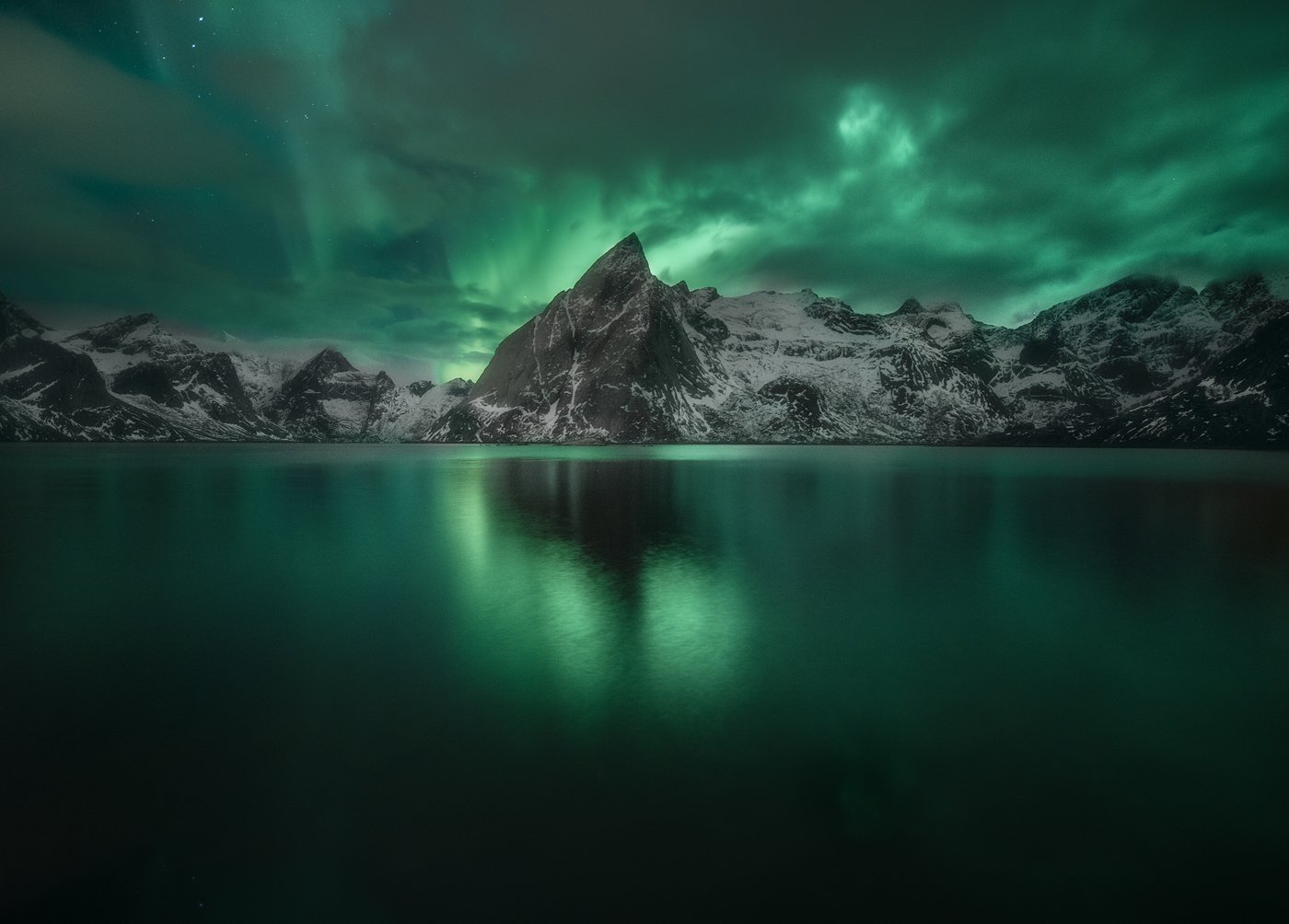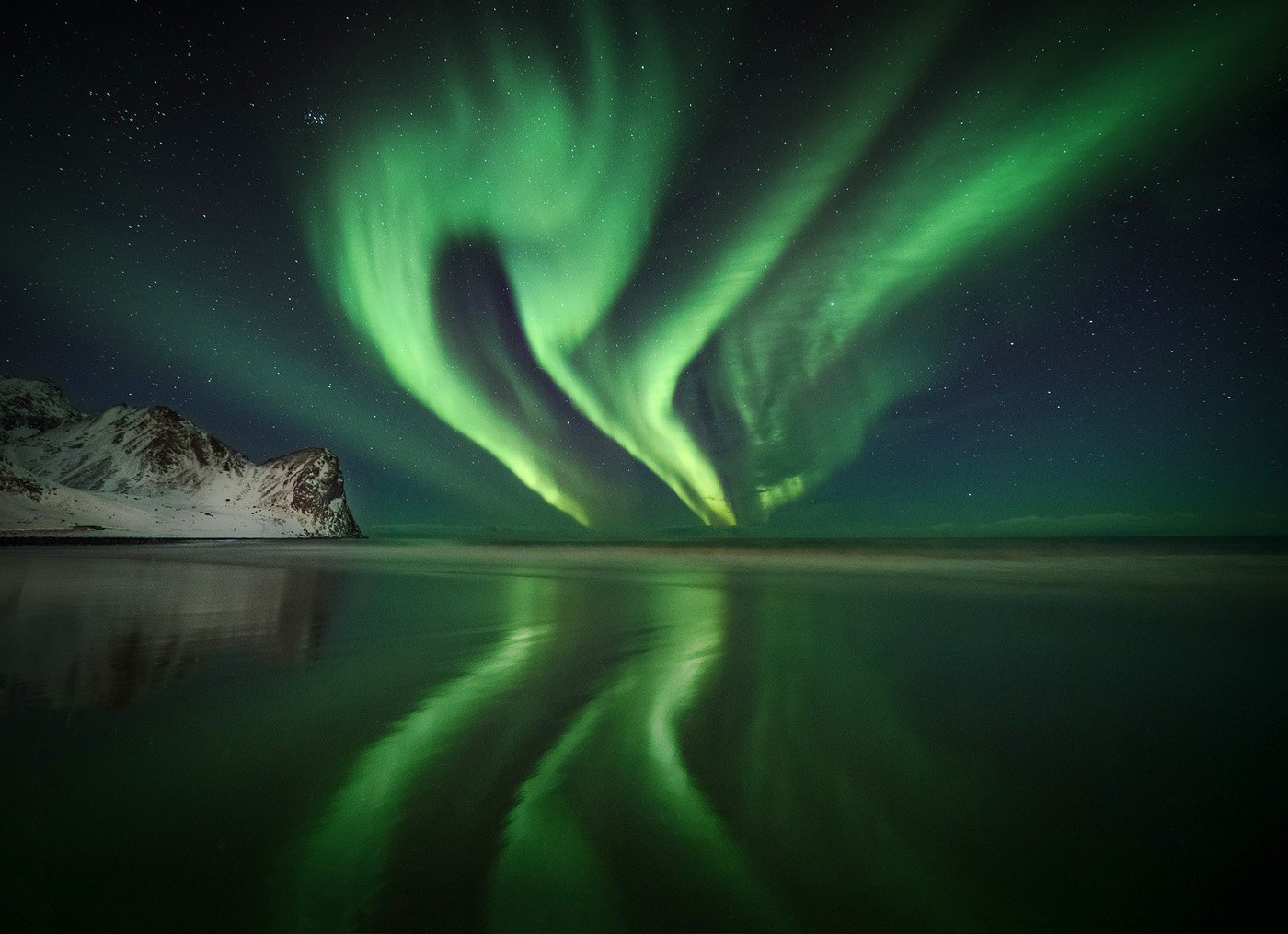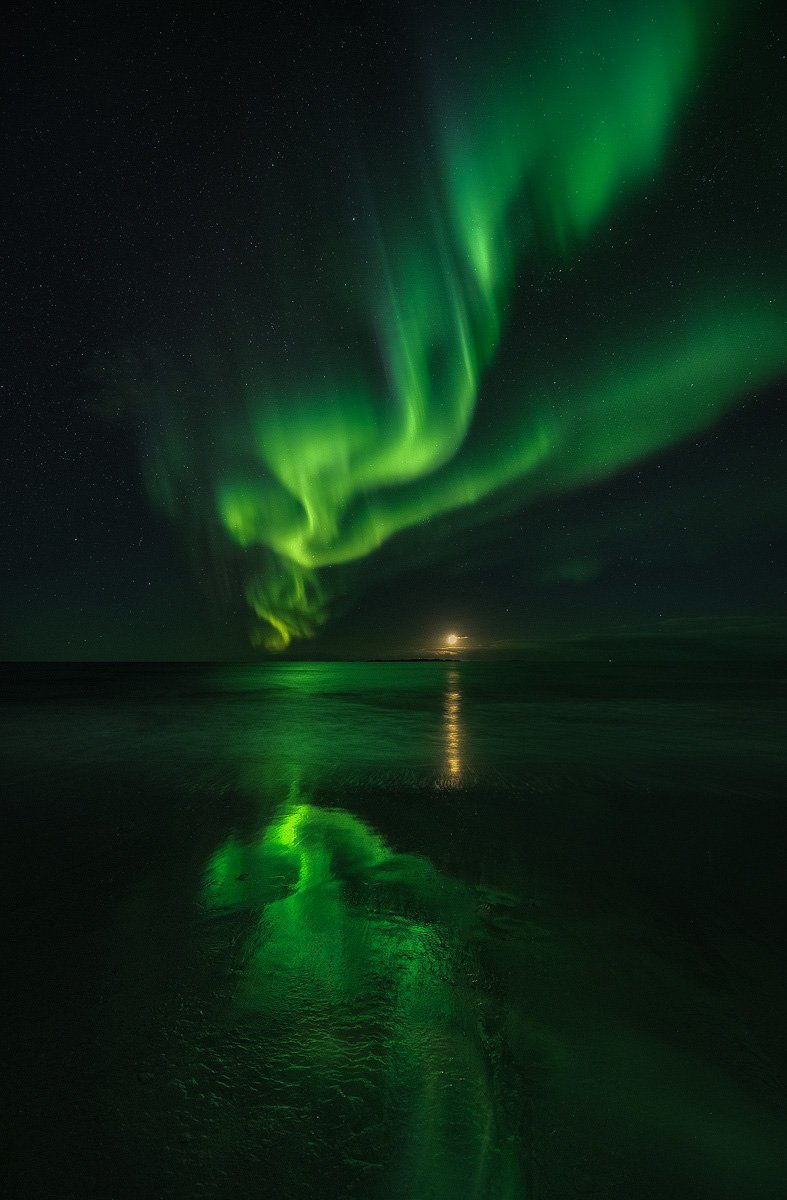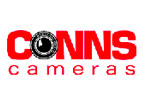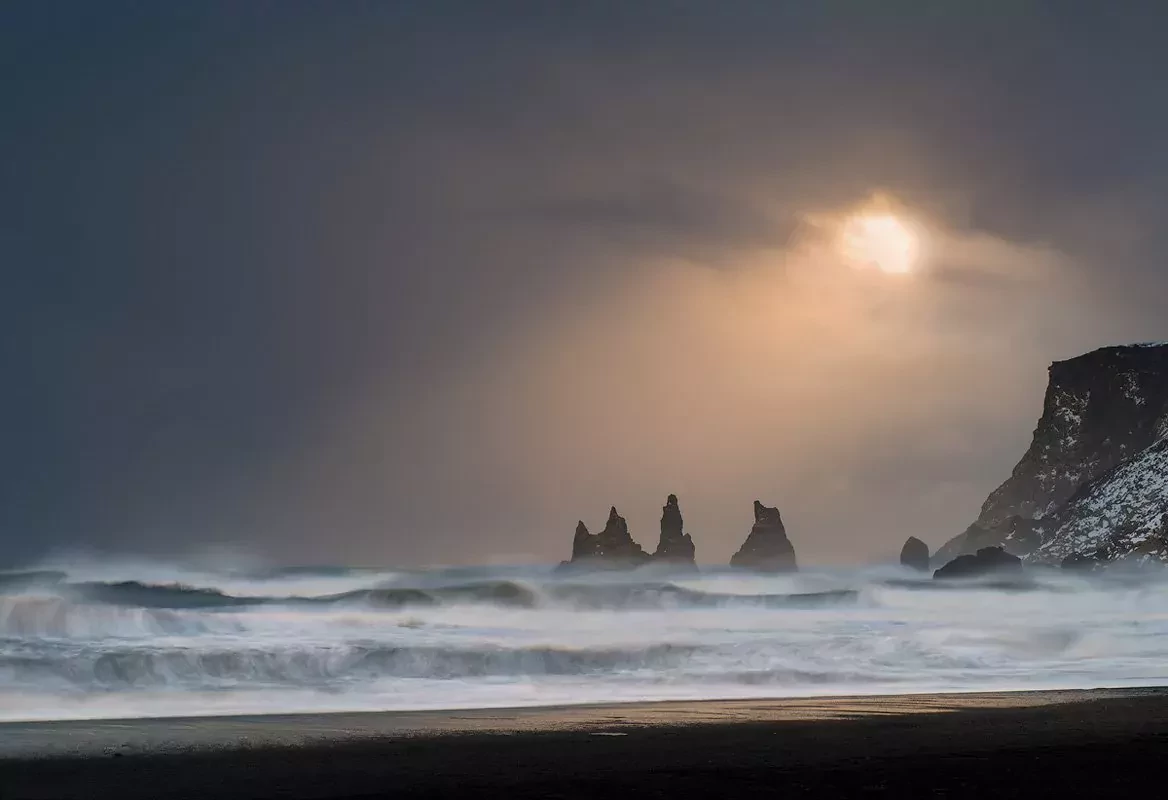Winter is Coming – Ideas, Tips and Inspiration
We have just come off some amazing Autumn adventures and while there are still some great colours to be had we have begun to realise that winter is coming. We are on a bit of break time at the moment but we look forward to hitting Iceland, Norway the Dolomites plus of course Lake Baikal in the New Year. With that in mind, Peter has taken some time to think about the various types of light that winter brings and the range of photographic opportunities that winter presents. Read on for some technical tips and tricks, married to some insights about lighting and execution all moulded together by a healthy dose of inspiration.
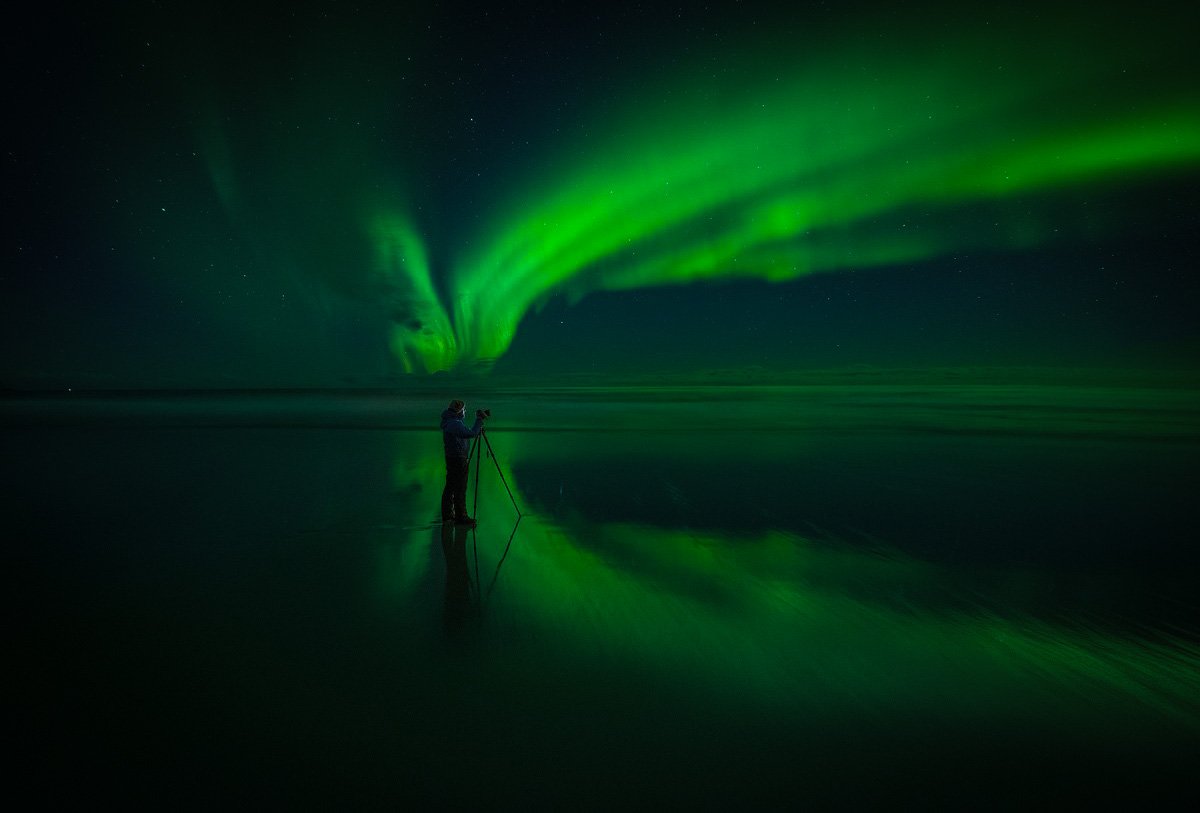
Join Us On A Winter Adventure in 2020
A Stormy Winters Day
Winter can provide some amazing chances to shoot dramatic scenes with stormy light. Snow is great but not essential. Take a look at these images. Dark moody skies, foreboding water, what more could you ask for on a stormy winter day. Note the water textures too. I have used a 3 stop Lee filter which allows me to slow down exposure without getting a really long shutter speed. This allows me to show the power and energy of the winter’s day through the texture of the water.
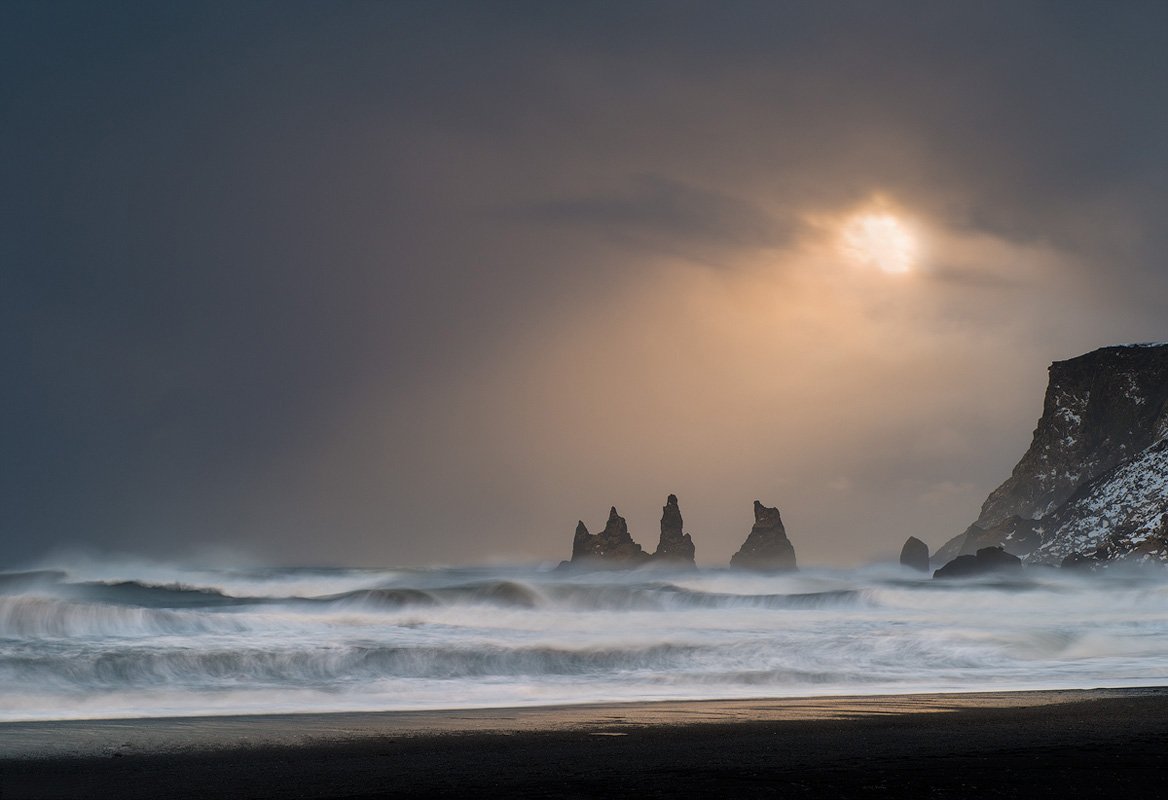
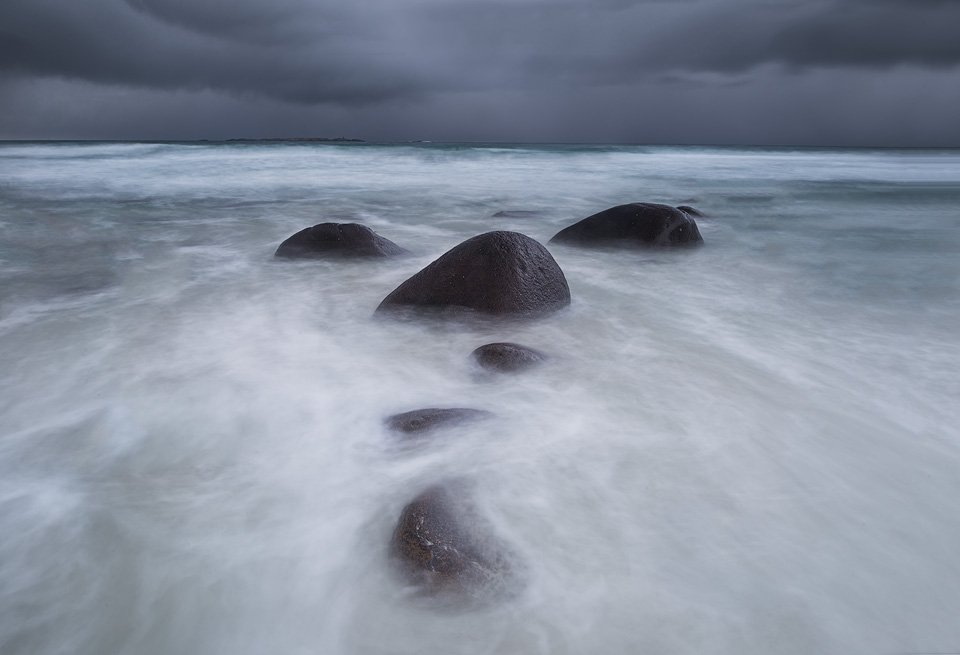
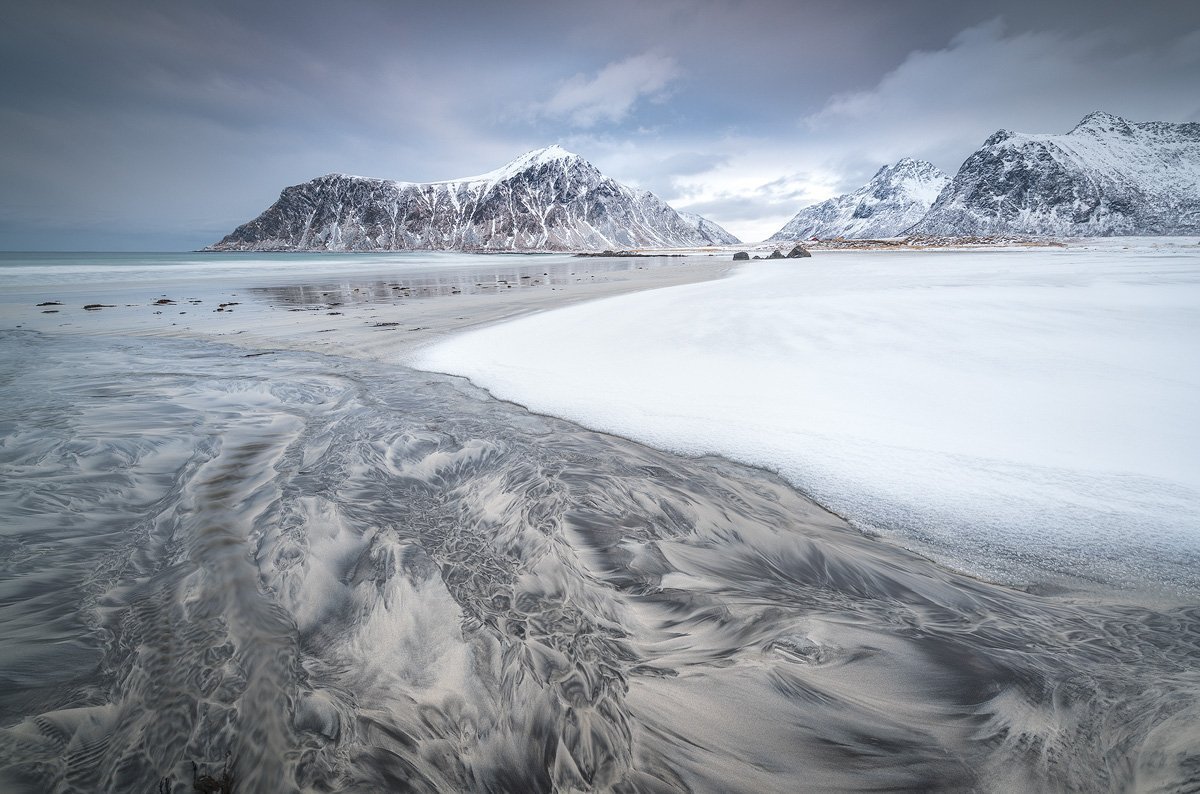
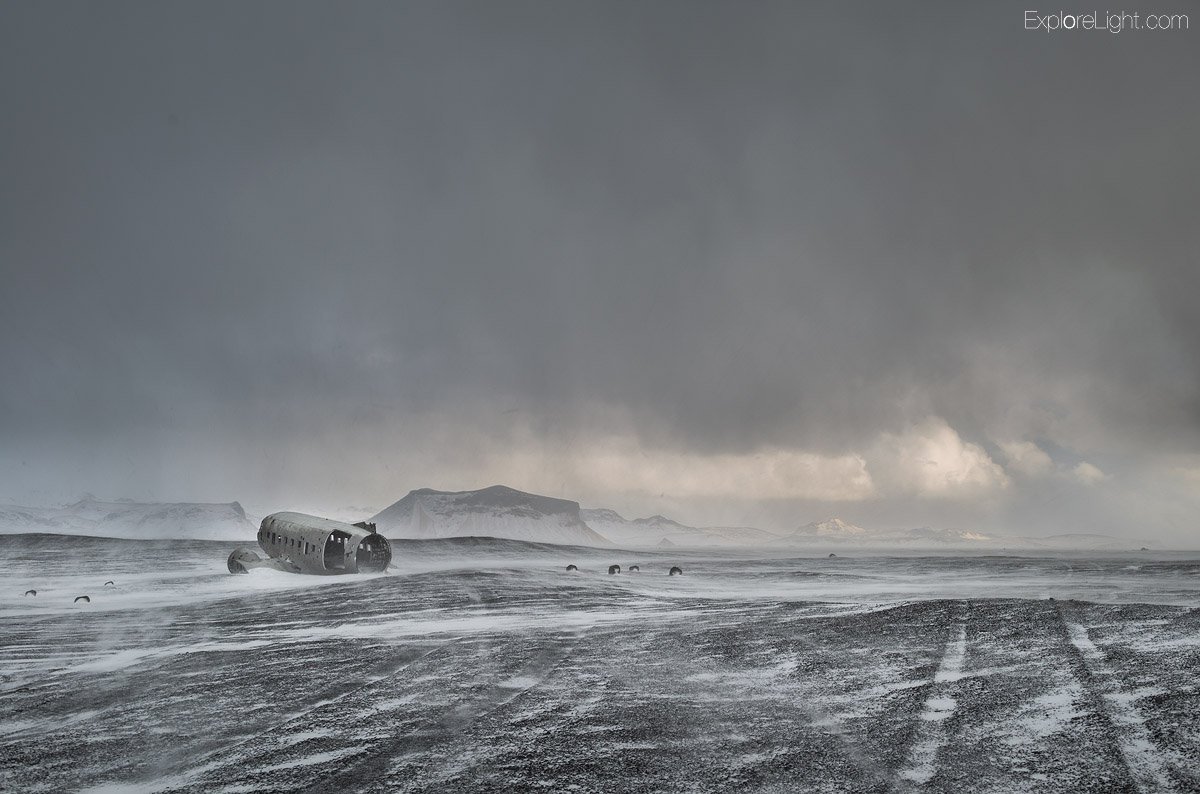
Tips for Shooting Stormy Winter Landscape Photography
- Shoot between the showers. It can be challenging but there are some great images as the new front approaches.
- Use a 3 Stop filter and work with shutter speeds between 1/2 and 4 seconds to maintain varying degrees of water structure.
- Dark skies only need gentle grads to be careful not to overcook those skies in camera. A grad for the sky might not even be needed. Over darkening leads to noise and grain.
- If the snow and hail suddenly roles through switch tactics and switch to quick shutter speed to freeze the power of the storm. Like in the final image in this series.
Magical Winter Colours
I think it’s fair to say we can all get down to some moody winter light. But how about the potential for epic light high in the Dolomites, or deep in the Arctic circle. Got to love those colourful winter sunsets too. With snowcapped foregrounds and dramatic ice, the dynamic range can be narrower than other seasons. Glow and snow, a fantastic combination.
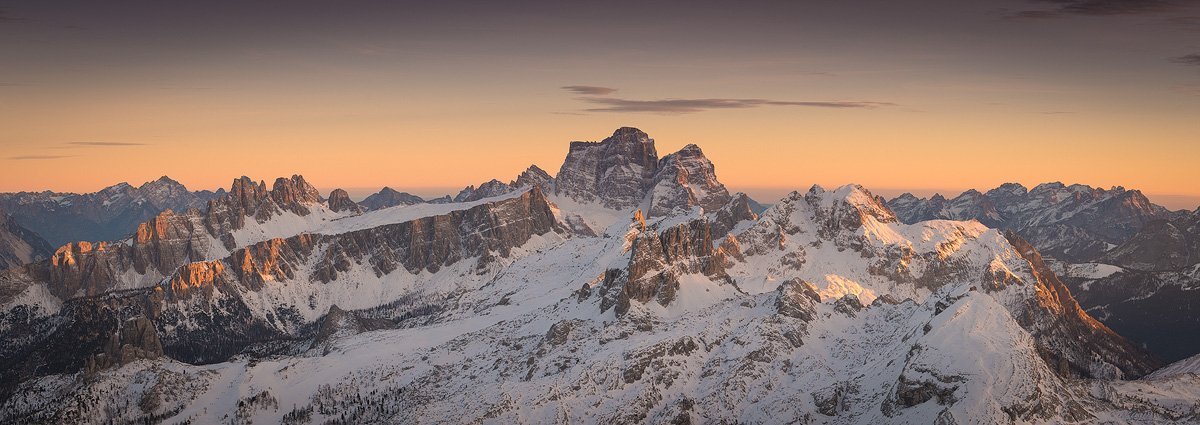
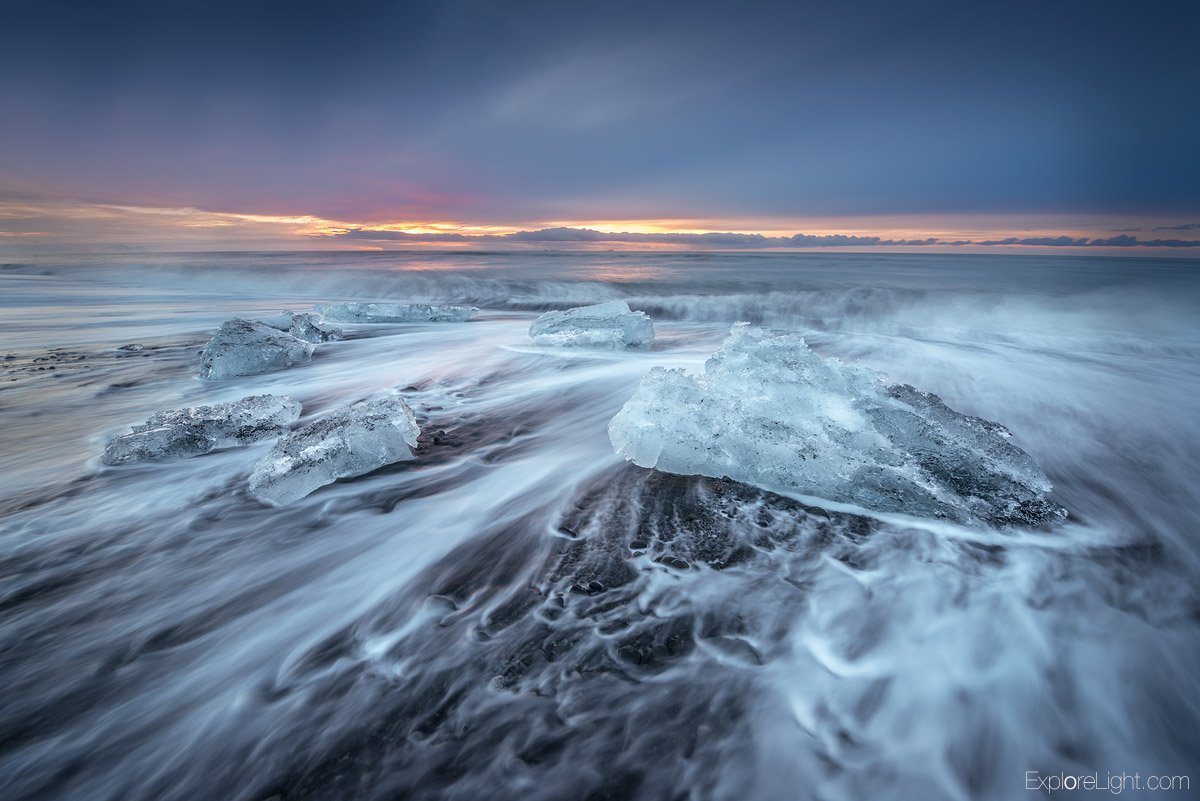
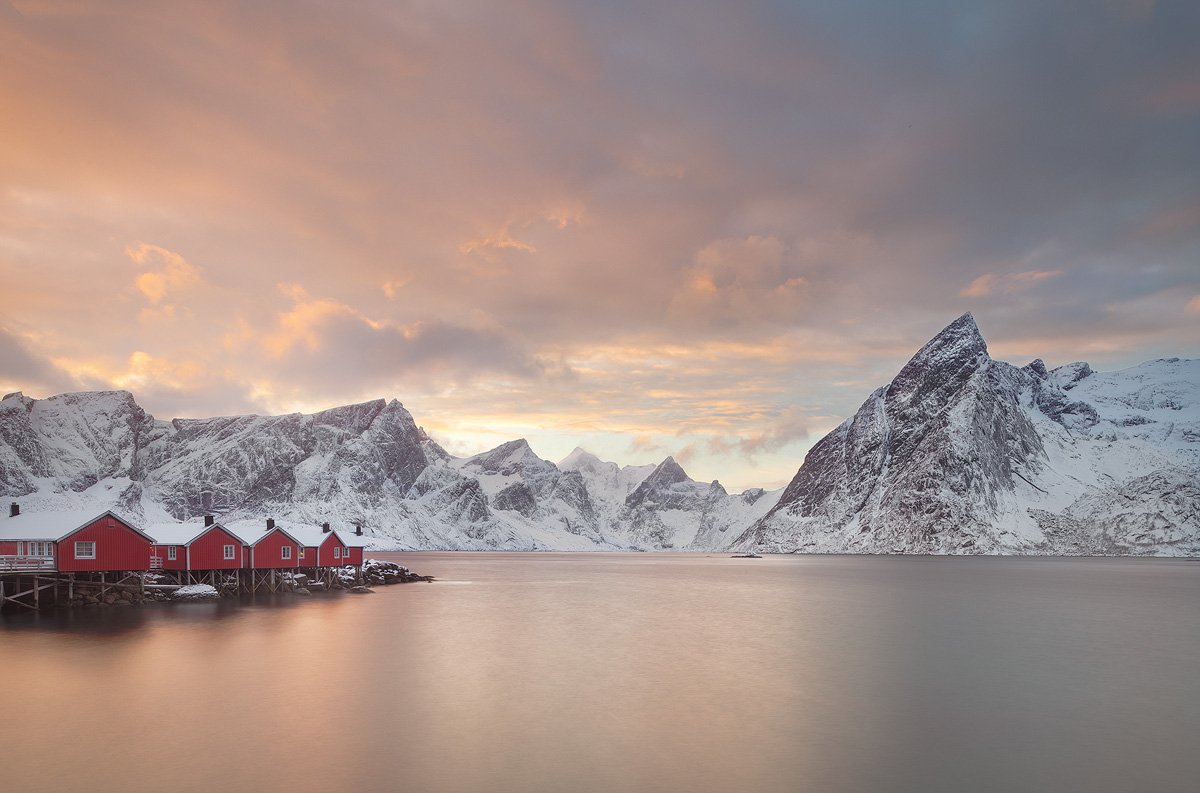
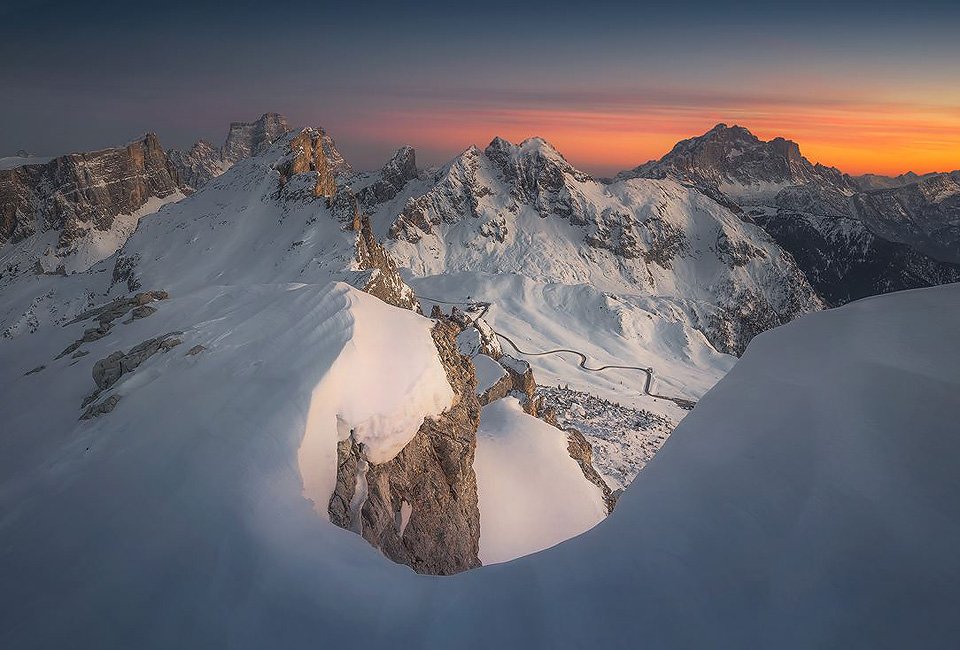

Tips for shooting Magical Winter Colours
- Stitch Panos of dramatic snow-capped peaks for added compression and resolution
- Shooting the most dramatic light can sometimes require a blend. Hone your blending skills to capture the most dramatic winter glow.
- Don’t be afraid to go long with exposure to get clouds moving and also intensify colours. I will often shoot 30 second or 1-minute exposures at sunset.
- Plan your shooting around the clouds. An absence of low clouds, married to a range of high and medium clouds can often mean winter fireworks.
Join Us On A Winter Adventure in 2020
Abstract Winter Photography
Look down, find the ice, even small pockets, in nature, on your windscreen. It’s winter, it’s around. We just happen to have an international abstract maestro in our ranks so who better to feature than Mr Daragh Muldowney. Daragh has a whole wealth of winter abstract imagery from Iceland to Ireland but here is some of his latest work from Lake Baikal. Daragh uses a 100mm macro and focus stacks to gain maximum sharpness. Don’t forget depth of field is not just about aperture. Focal length is key, and even more significant is proximity to subject, hence a very limited depth of field in macro imagery.
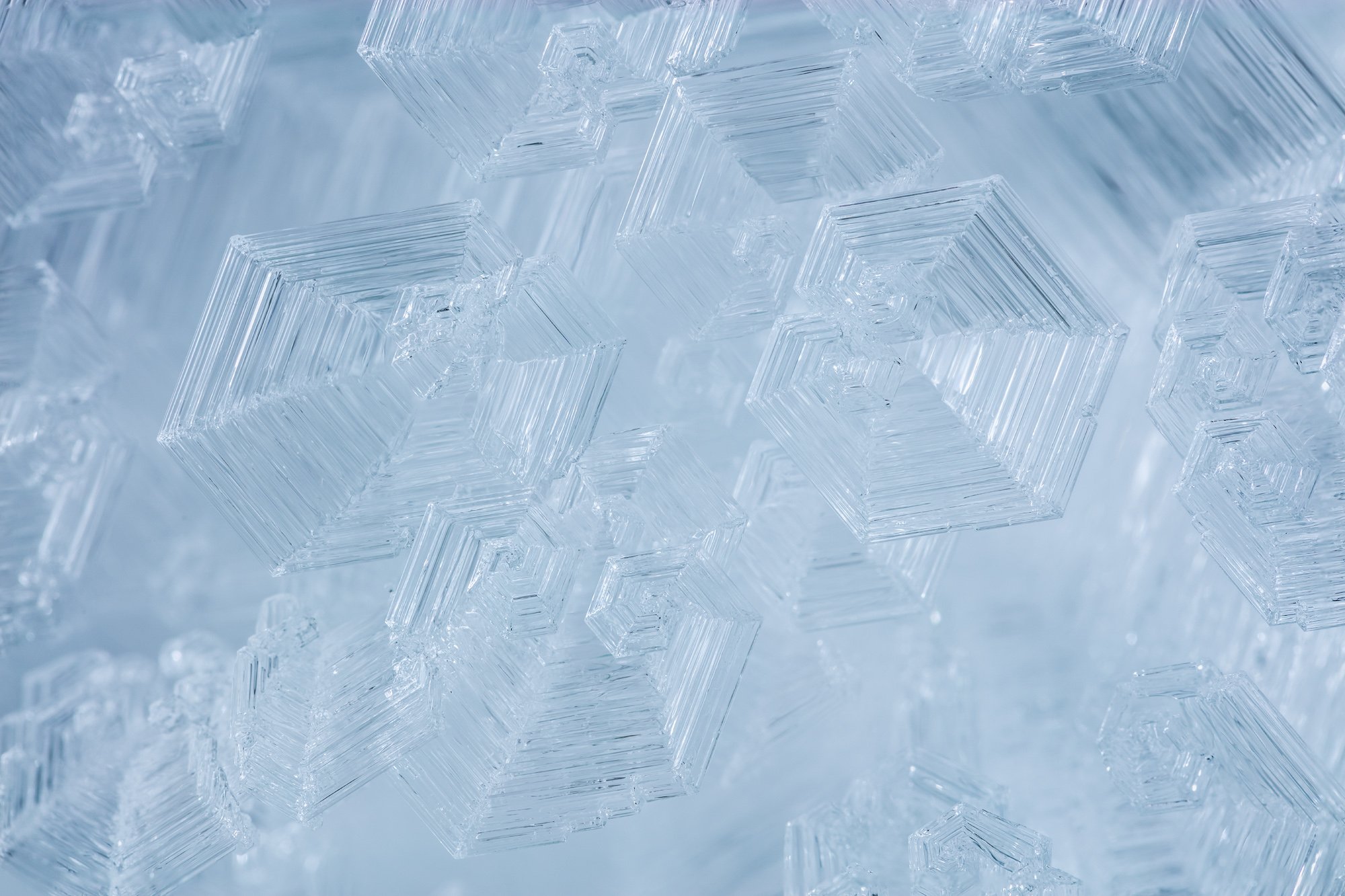
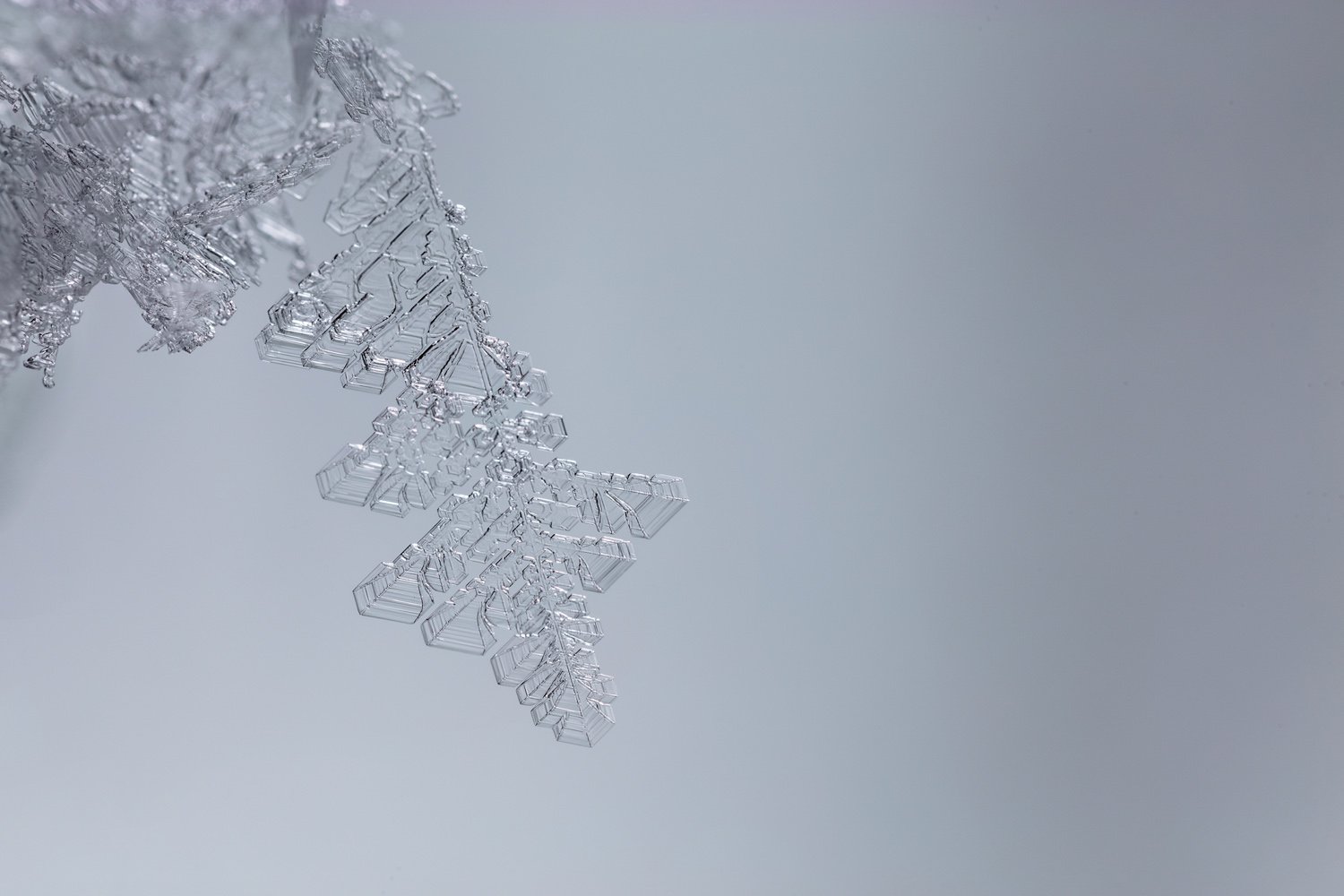
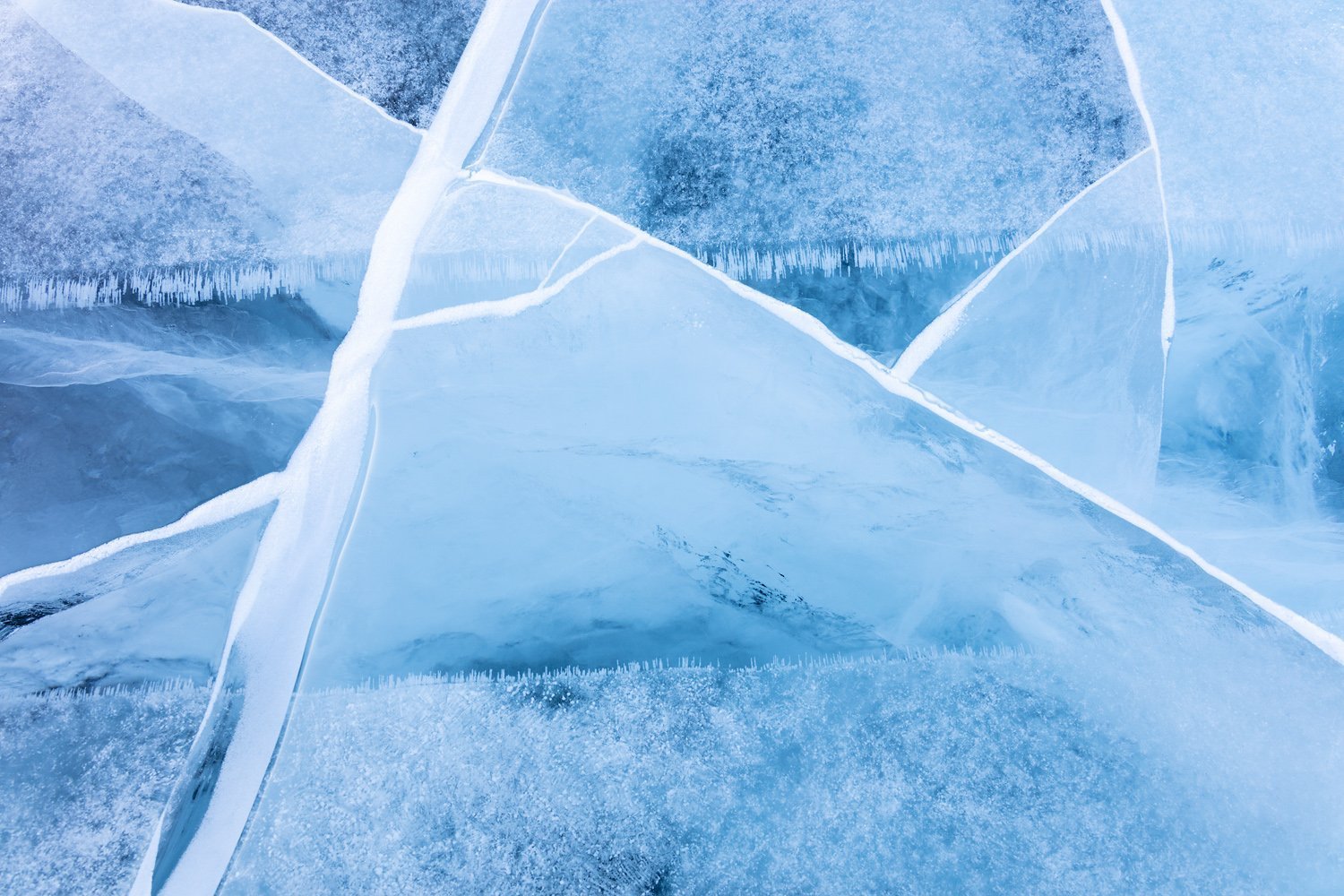
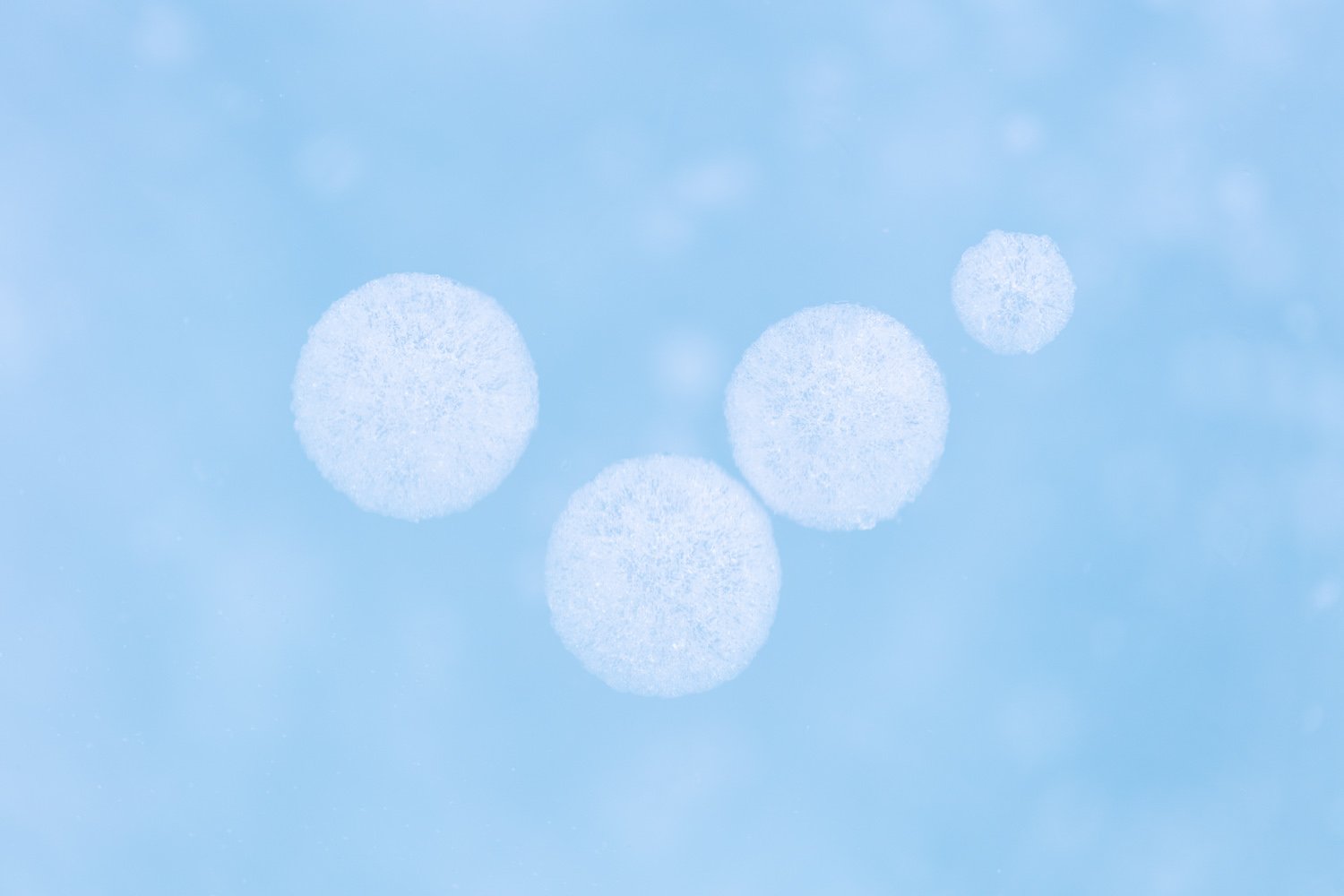
Tips for shooting Abstract Winter Photography
- Find repeating patterns for your abstracts
-
Isolate shapes
- Learn how to focus stack for depth of field in macro
- Use your polariser to play with reflections within the macro
High Key Winter Landscape
Go high or go home. High Key that is. Sorry that’s a bit harsh. Having said that my favourite type of winter image at the moment is definitely this high key approach. We’ve had some amazing snow in the Dolomites, Iceland and Lofoten over the years and it really lends itself to this high key presentation. Simple structures amongst a blanket of fresh winter goodness.
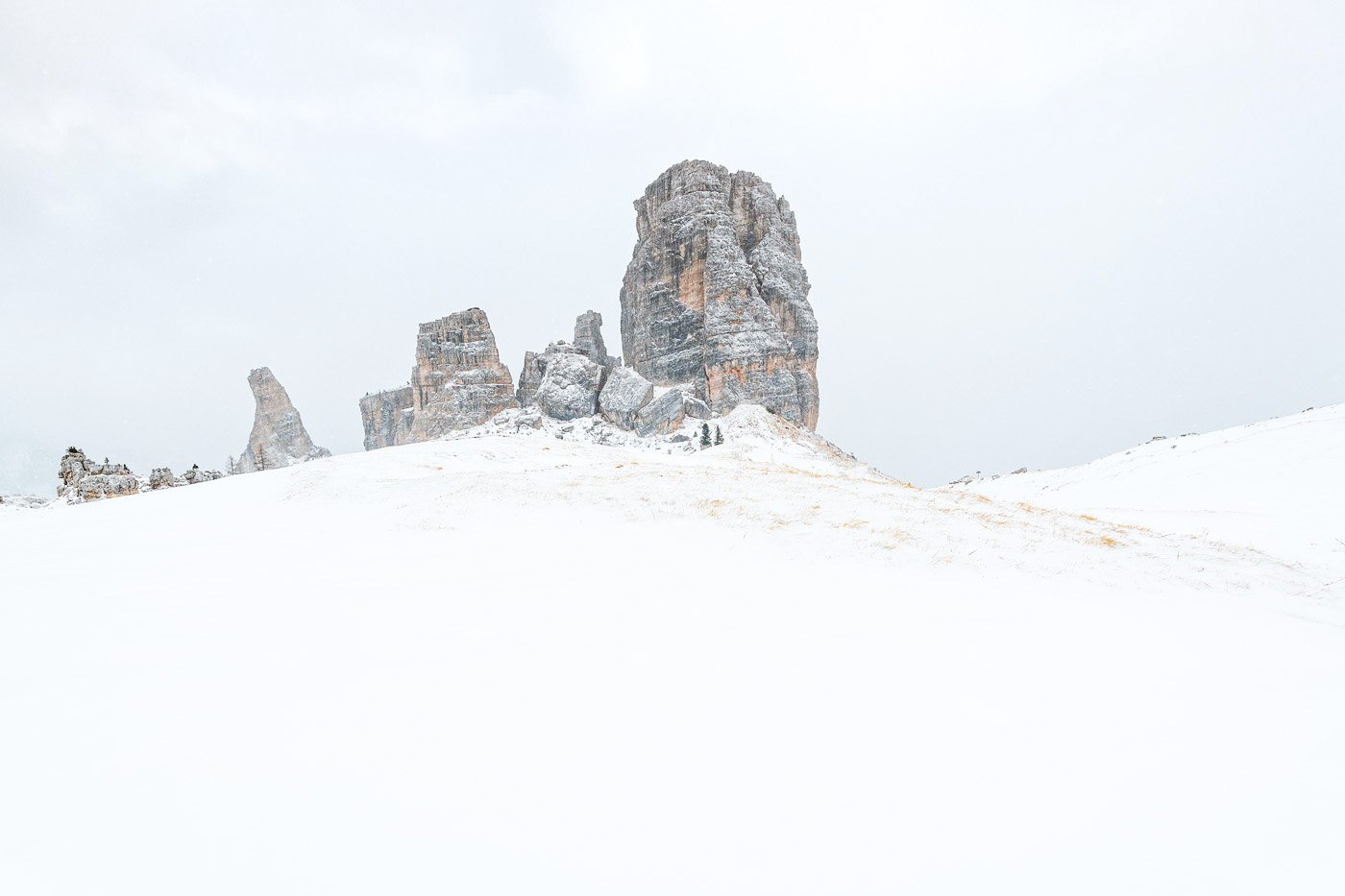
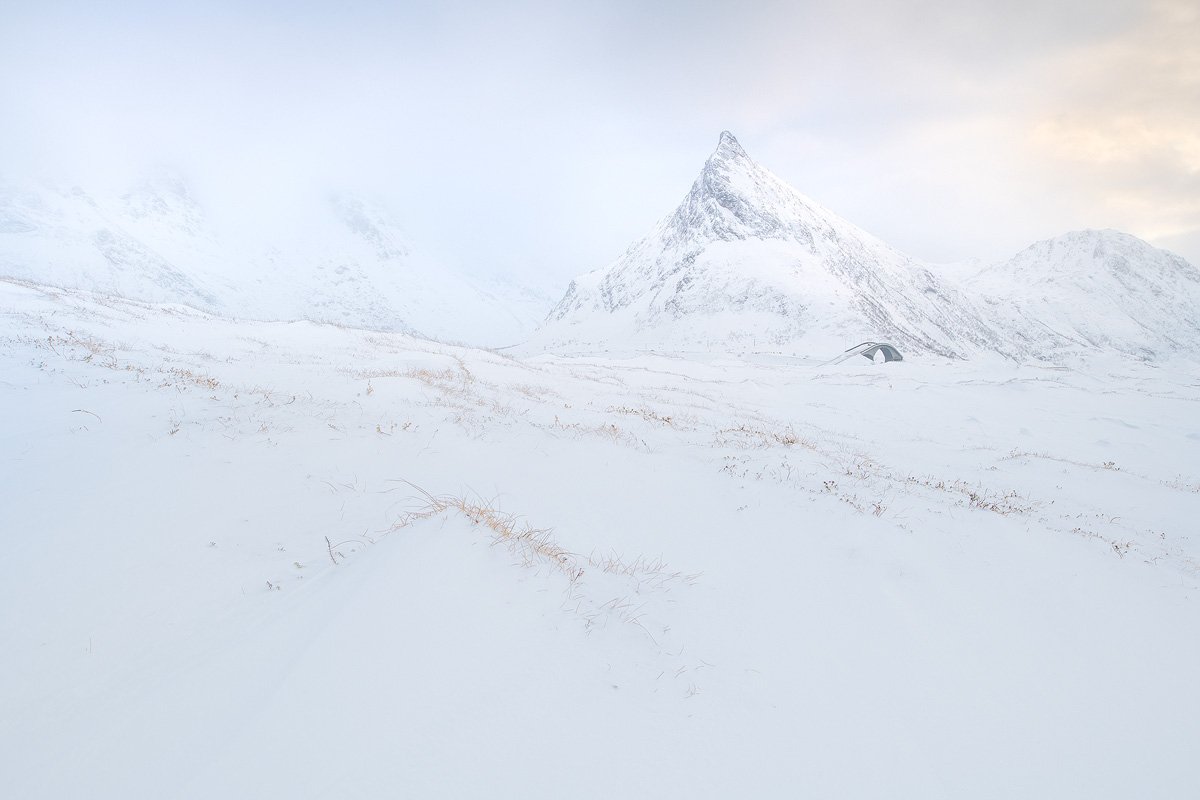
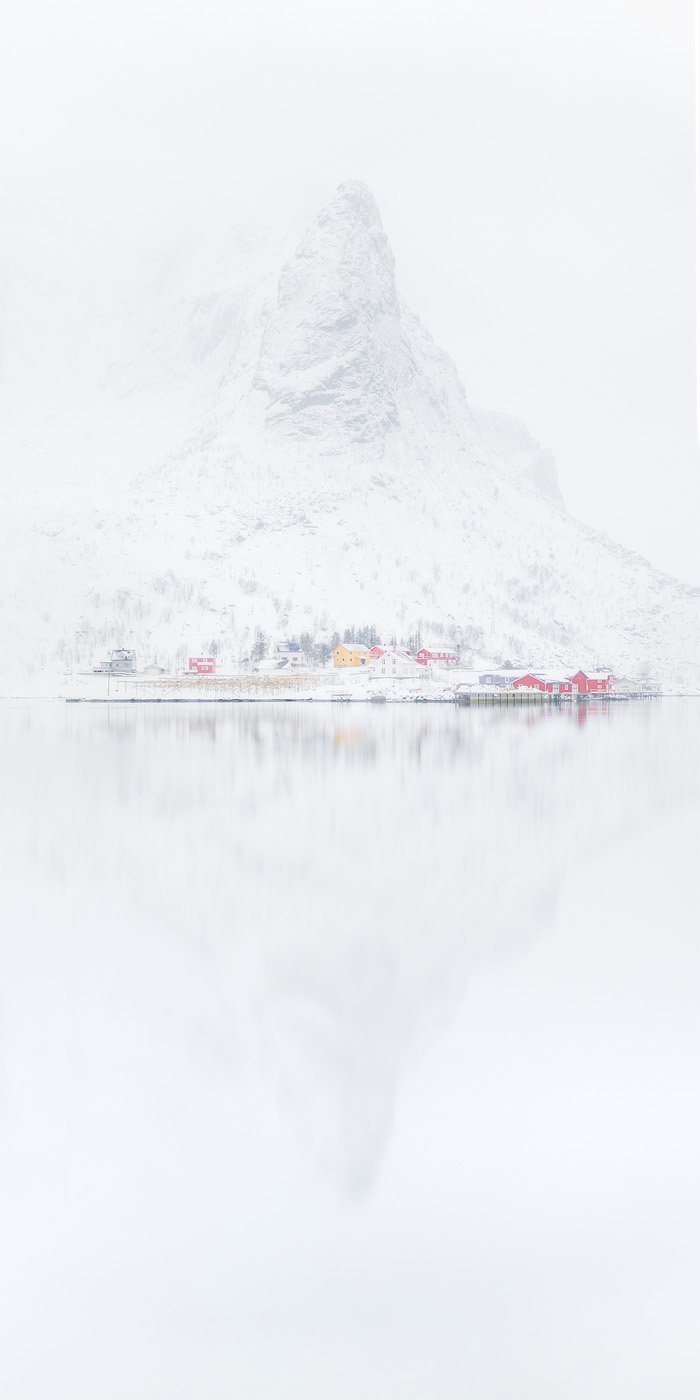
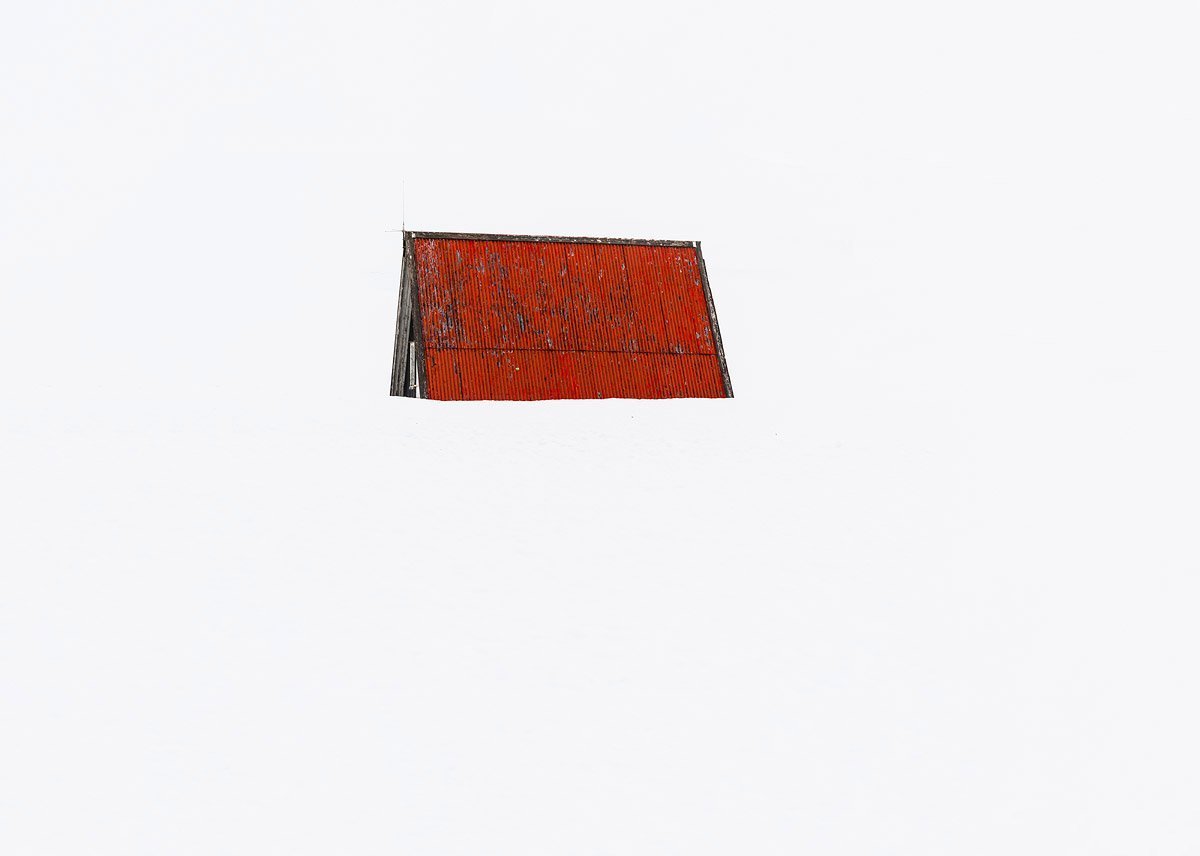
Tips for Shooting High Key Winter Photography
- Shoot bright and make your snow white. Use your histogram as a guide.
- Test the whiteness of your snow in post by exaggerating saturation to identify colour casts. Adjust with white balance and reduce saturation.
- Keep your whites white and add contrast to the core parts of your image only.
- Shoot on snowy overcast days without too much wind.
High Key Winter Landscape Flash Photography
Ok stay high key but go grab your flash. For the past few years, my flash has been an essential item in my winter gear list. Just one little pop and capture the snow in full flow.
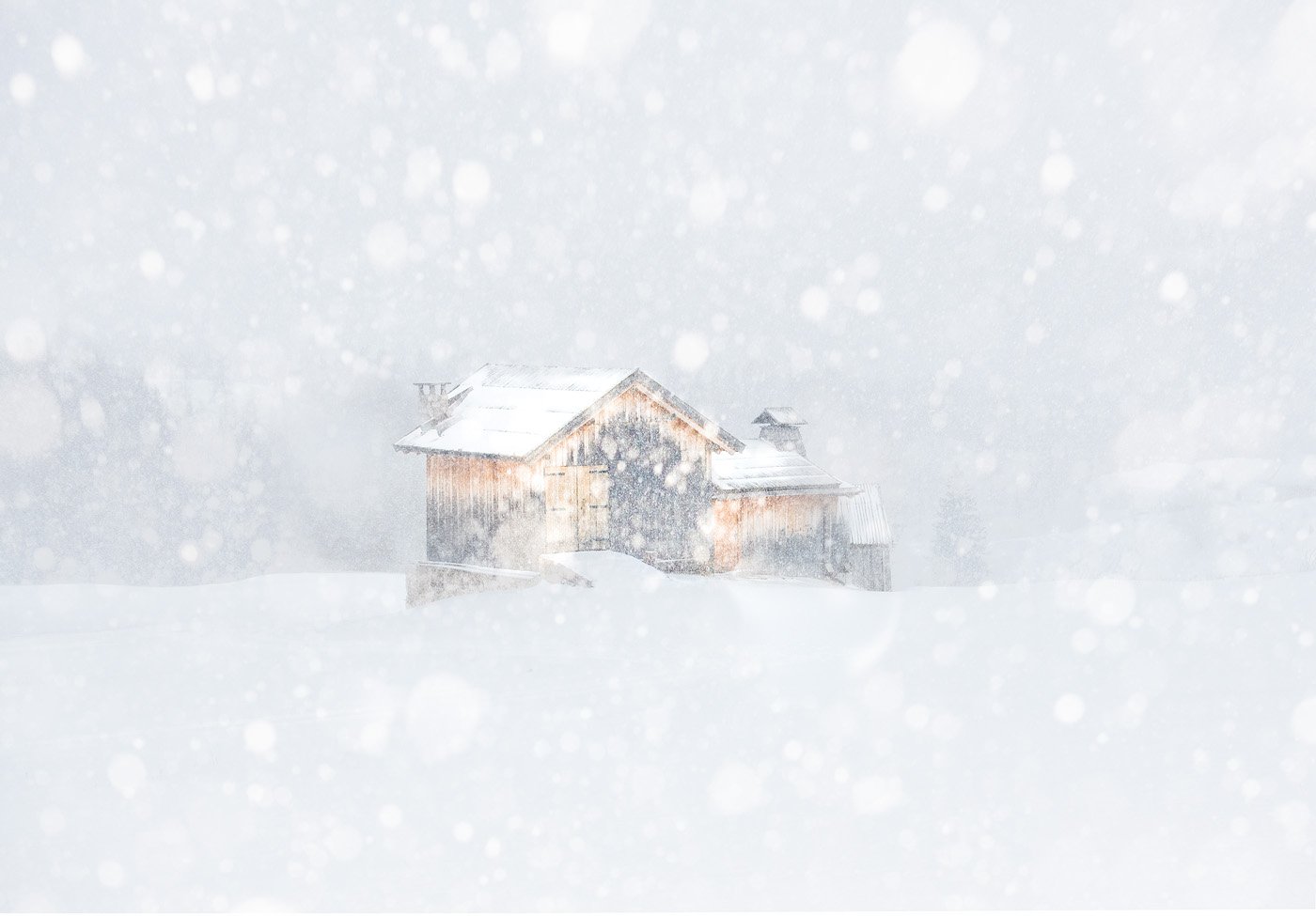
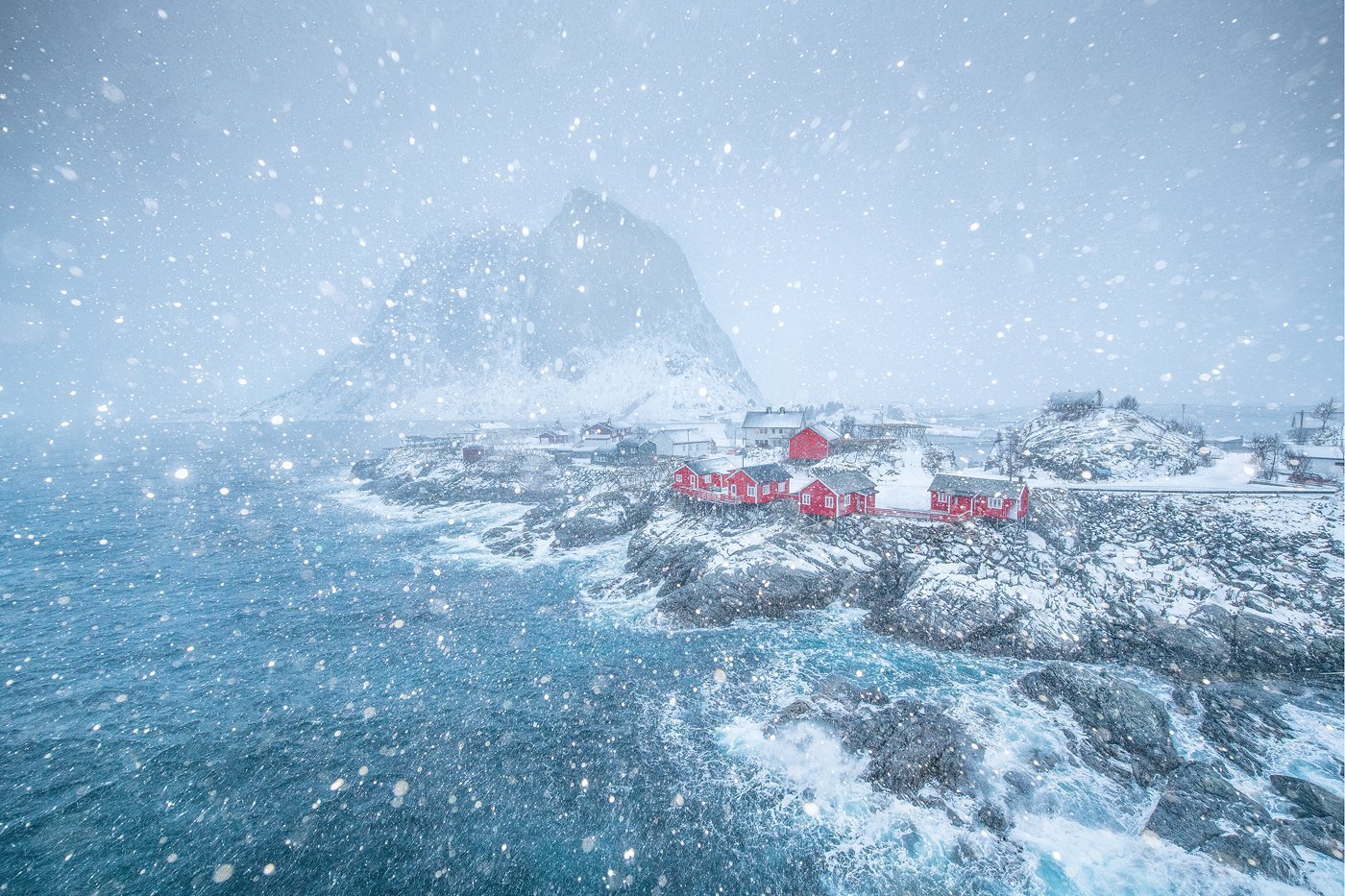
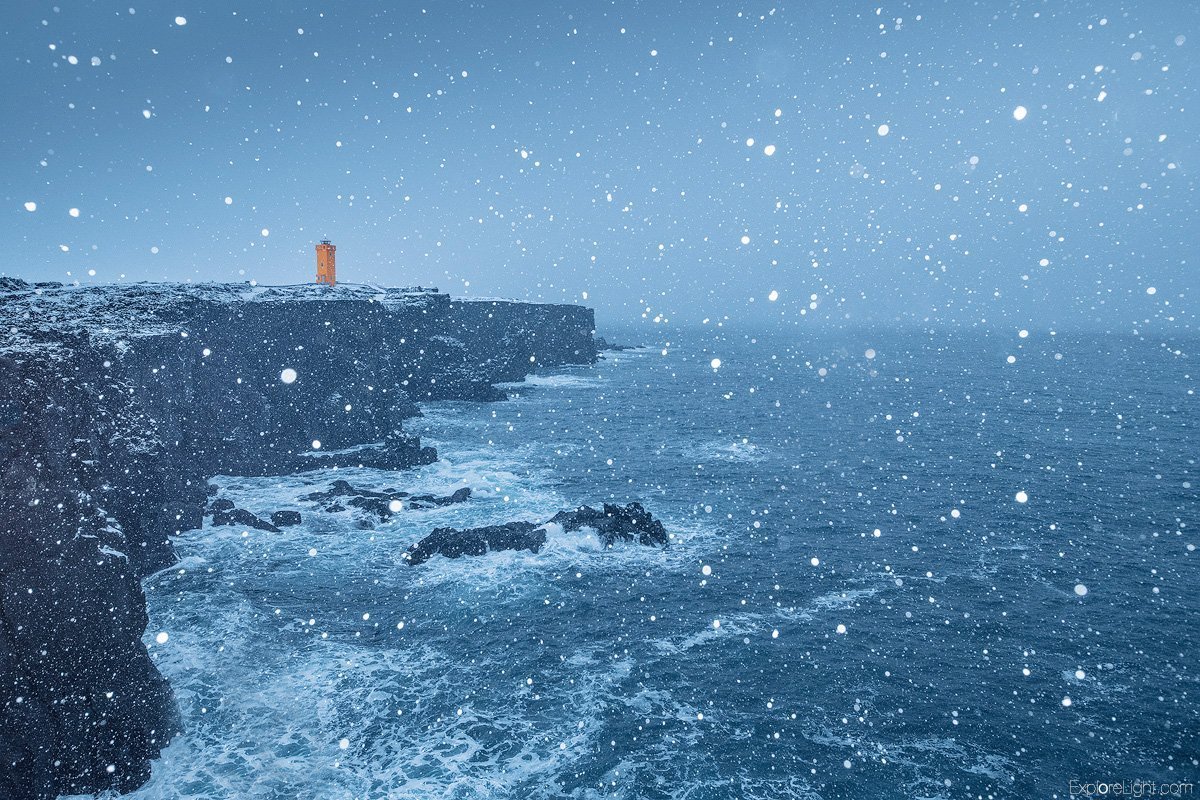
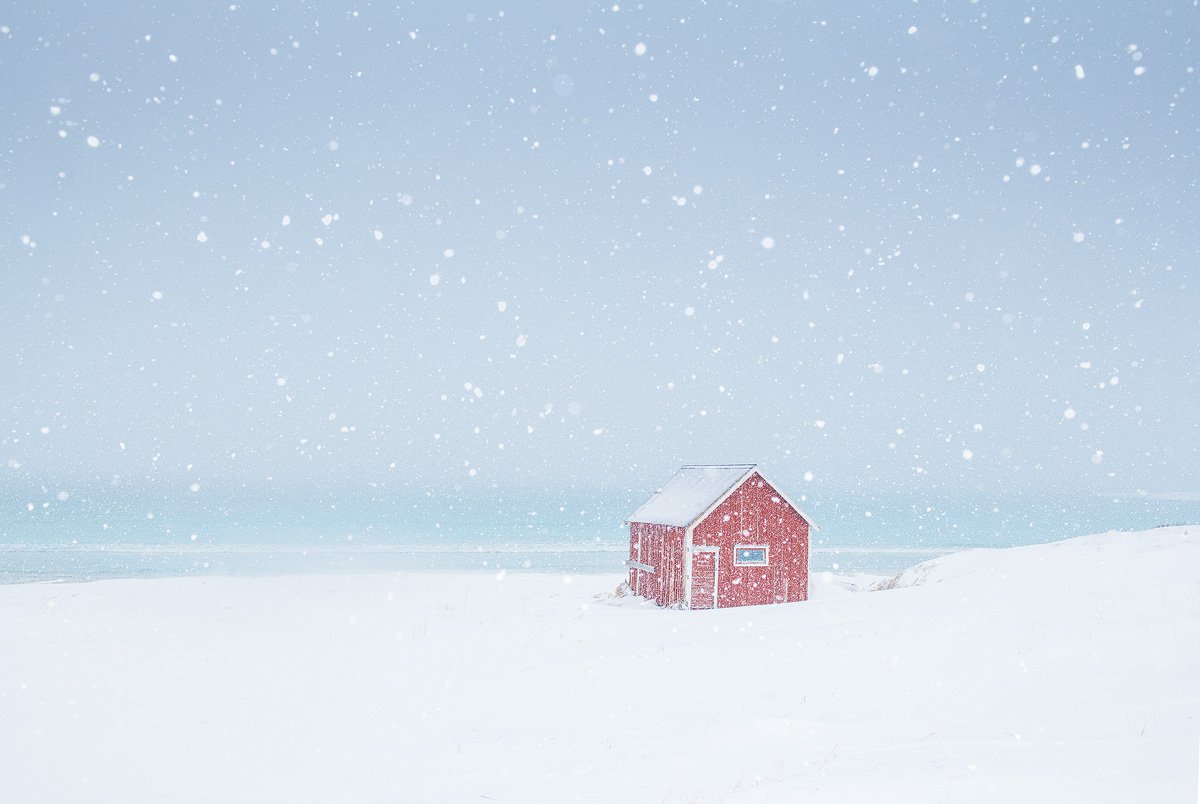
Tips for Shooting Flash Winter Photography
- Use shutter speeds of between 1/30th and 1/125th to freeze the motion. Adjust ISO and Aperture accordingly.
-
Keep shooting. Every image is different. Treat snow patterns like waves. One will stand out in post.
-
Luminosity masks are useful in grabbing the brightest snowflakes and dampening down the light a bit in the brightest areas.
Photographing the Northern Lights – Iceland and Lofoten
Last but certainly not least the mighty northern lights. We will be in full chase mode for our Iceland North and South trips plus of course Lofoten. There is nothing quite like the experience and the photography options of some stunning northern lights show.
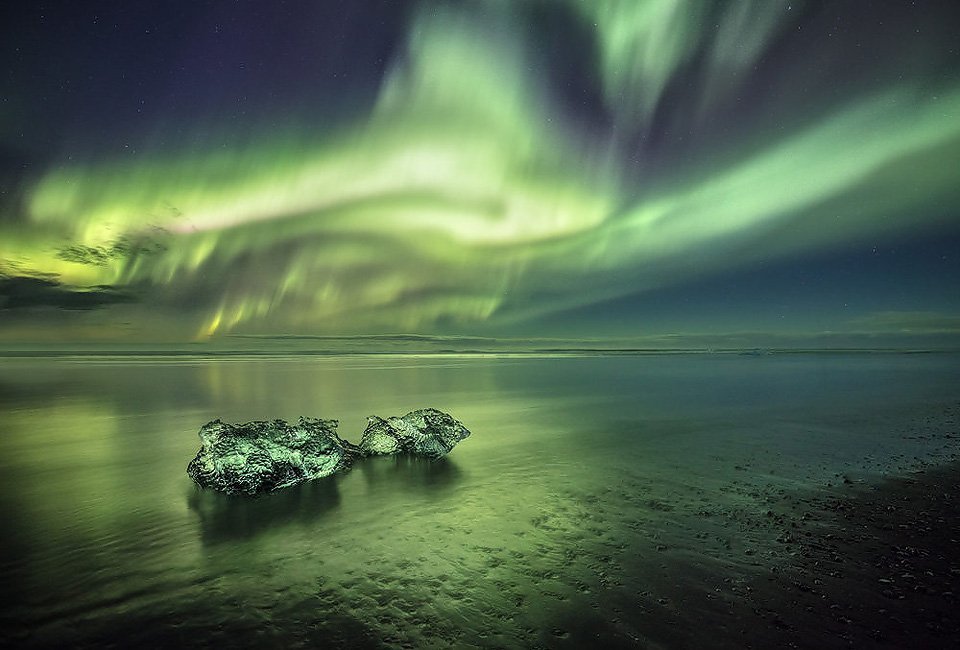
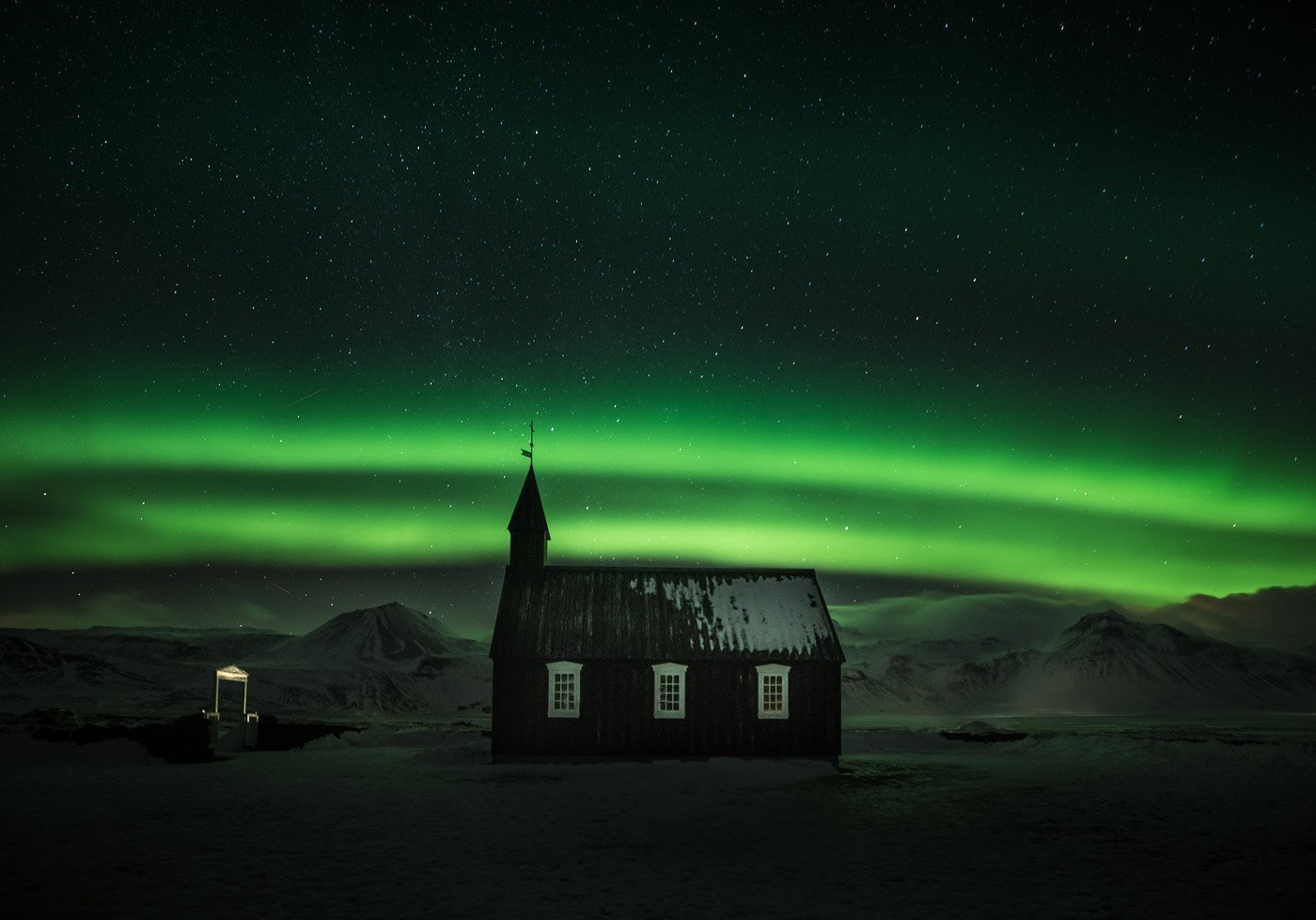
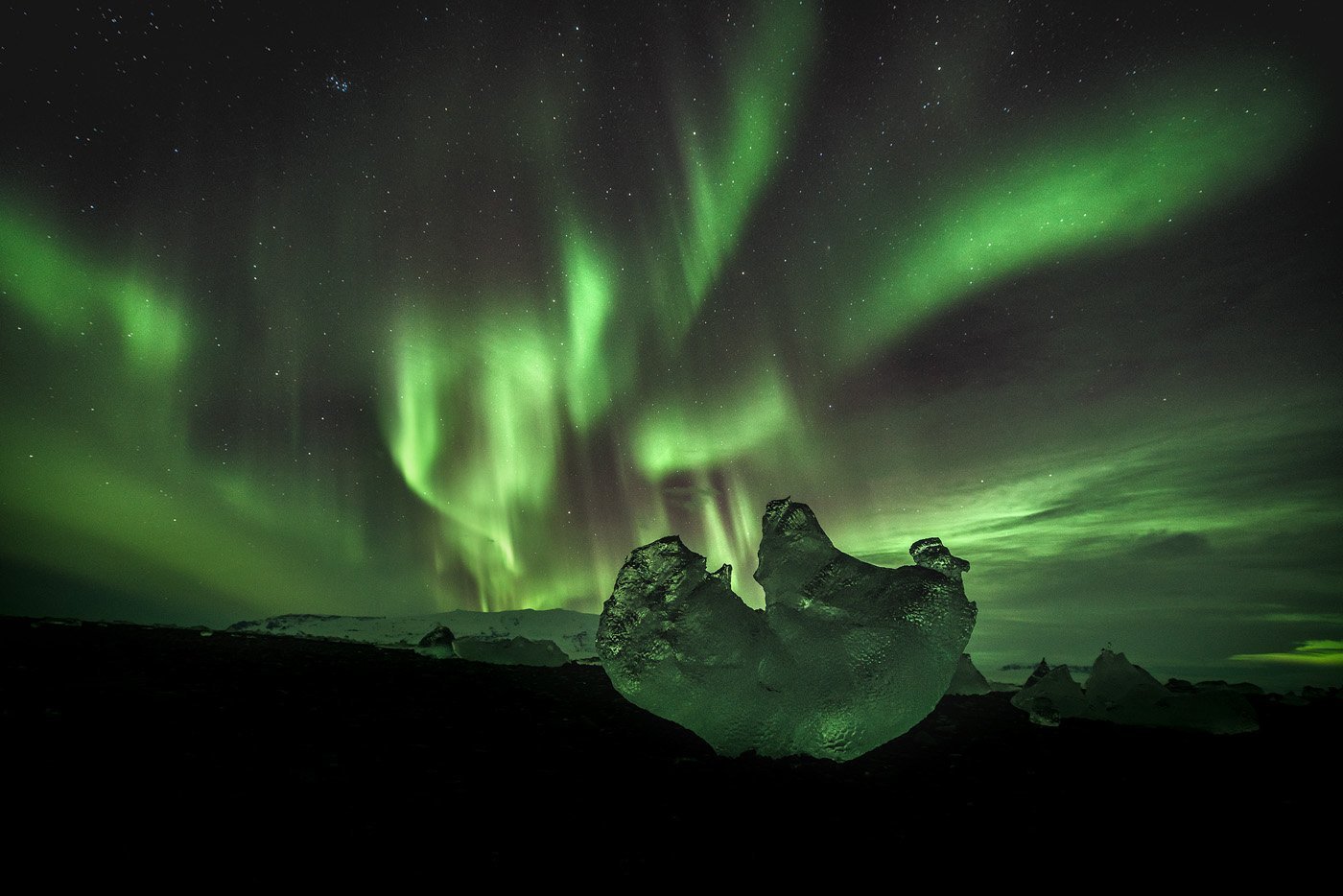
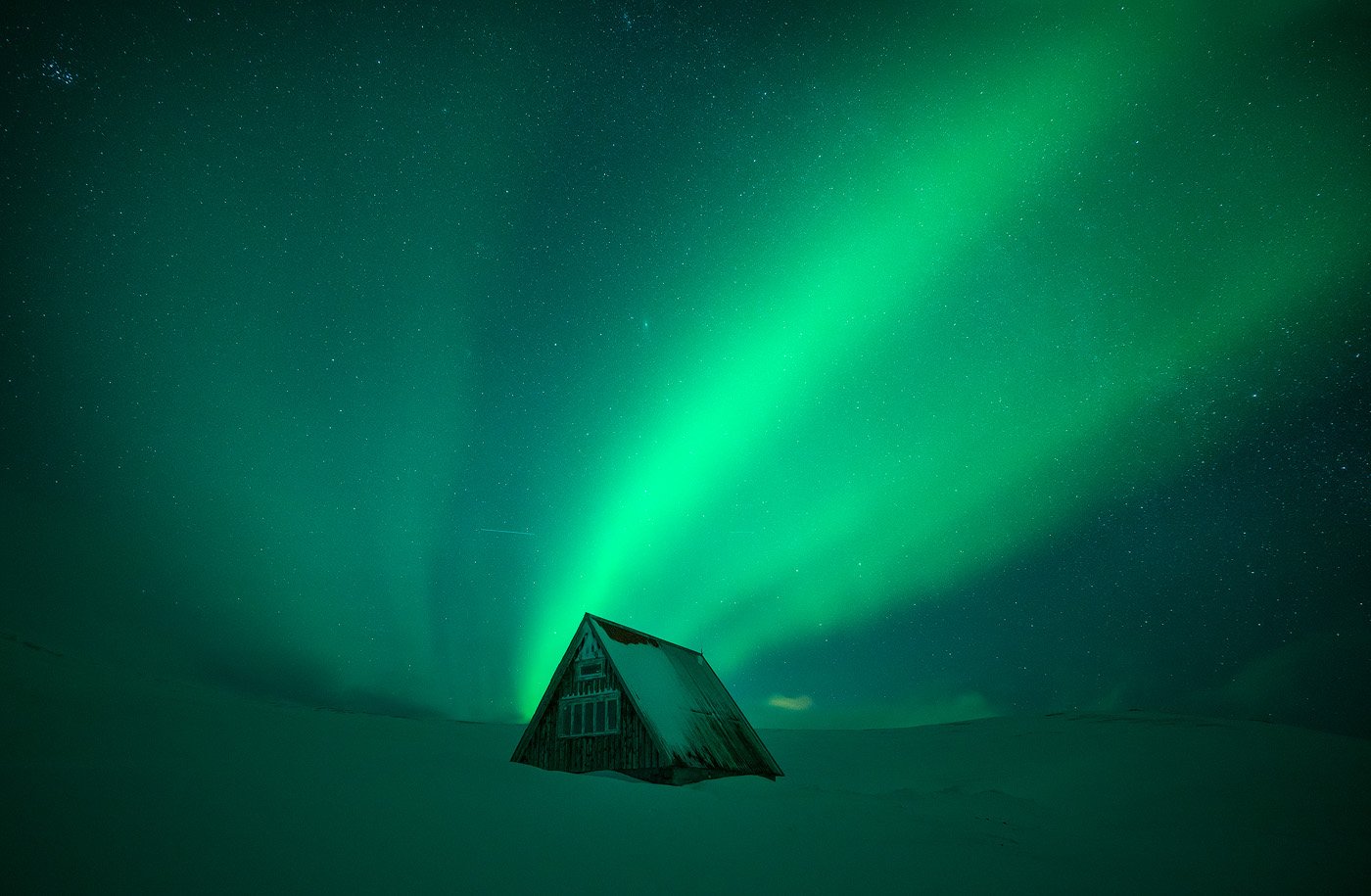
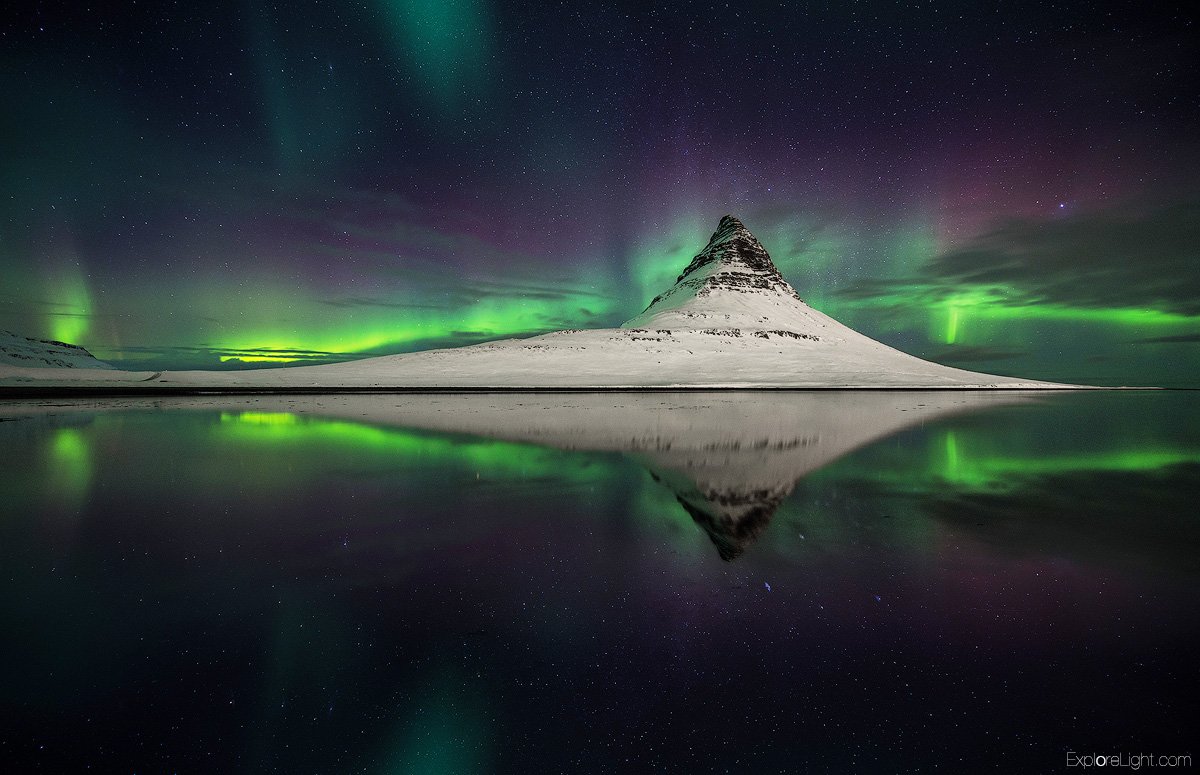
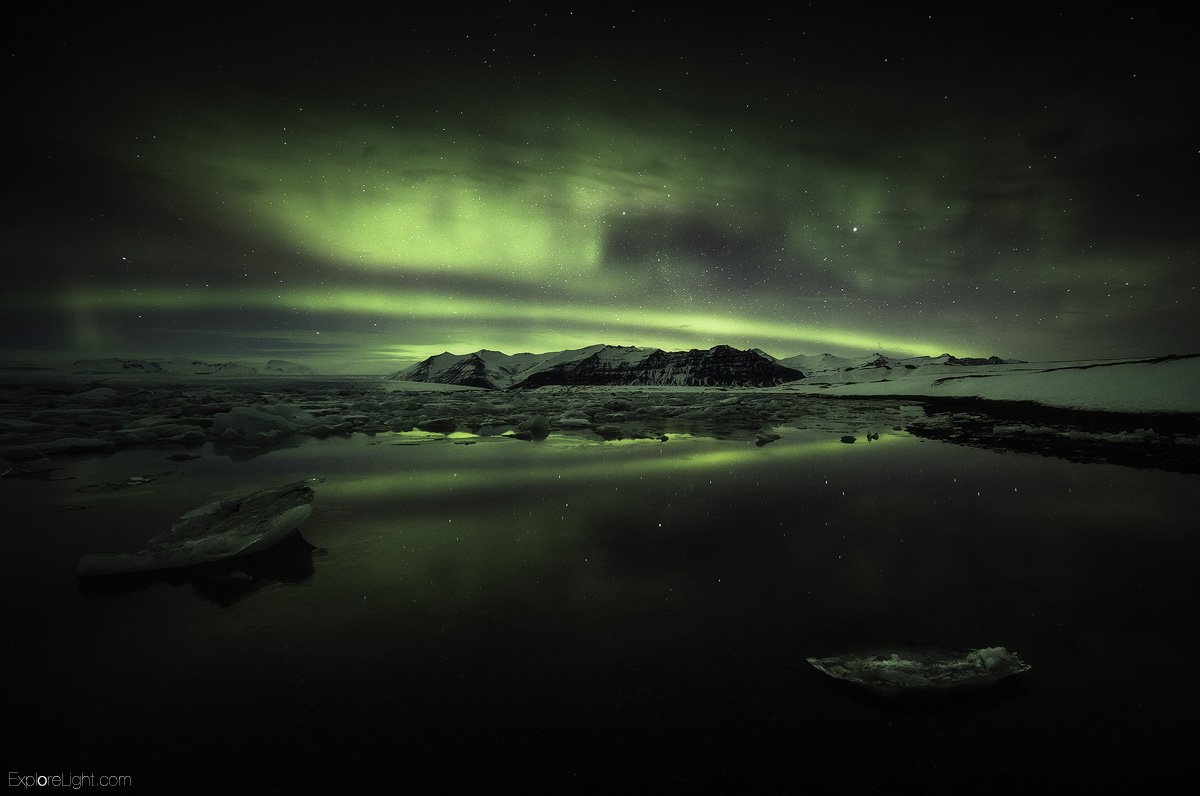
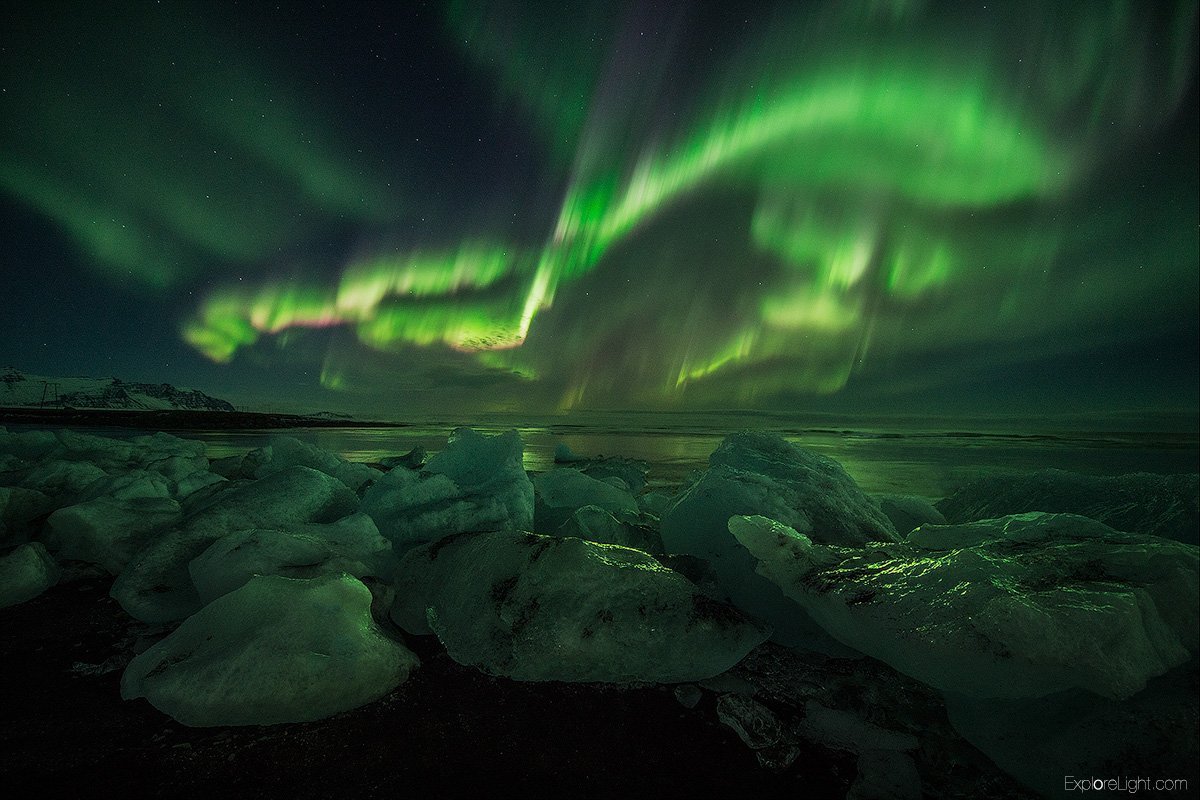
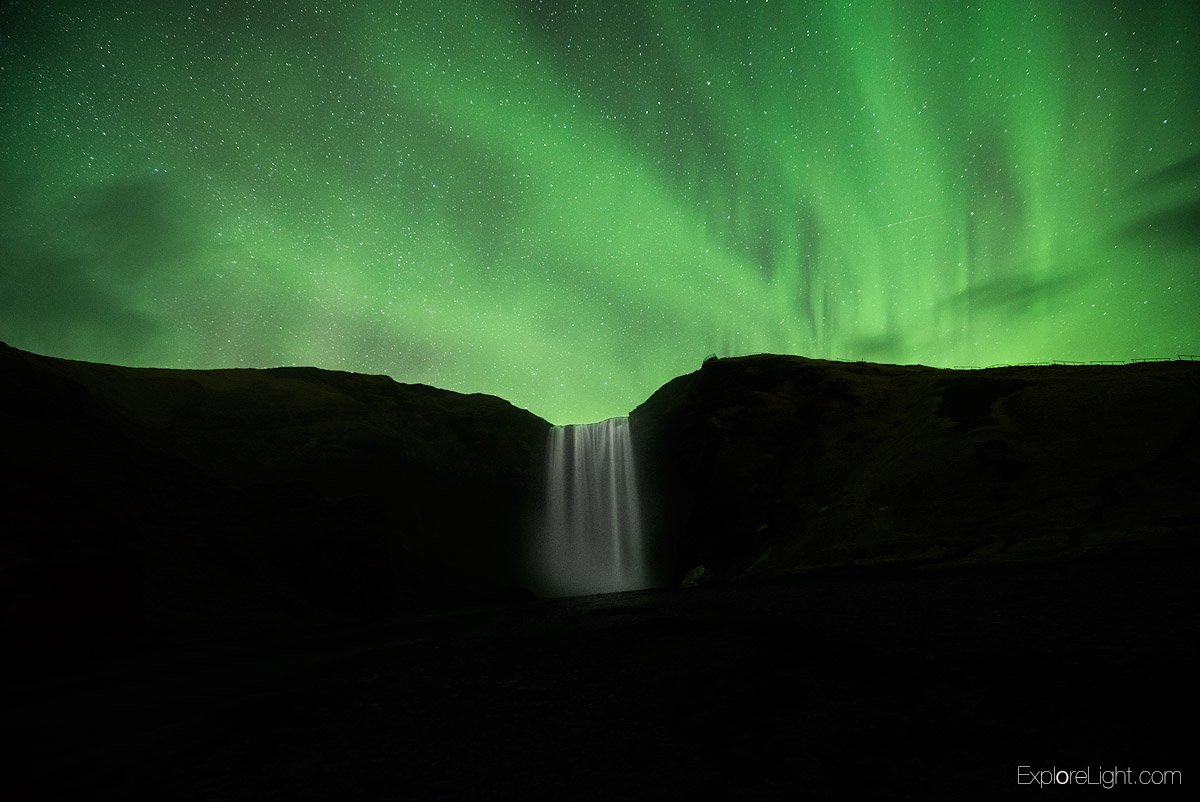
Guidelines for shooting the Northern Lights
- Tripod essential. A good test exposure is F2.8, 30 seconds at 1600 ISO
- When so far north in locations like Norway and Iceland cloud forecast is more important than the activity of the aurora
- The foreground is everything so make sure to do your planning during the day.
- Focusing is the most difficult thing. Use a headlamp to get focus, a distant light, or an instinctive feel for your lens. Alternatively, come with us and we will focus your camera for you.
Join Us On A Winter Adventure in 2020
